How to write a research plan: Step-by-step guide
Last updated
30 January 2024
Reviewed by
Today’s businesses and institutions rely on data and analytics to inform their product and service decisions. These metrics influence how organizations stay competitive and inspire innovation. However, gathering data and insights requires carefully constructed research, and every research project needs a roadmap. This is where a research plan comes into play.
There’s general research planning; then there’s an official, well-executed research plan. Whatever data-driven research project you’re gearing up for, the research plan will be your framework for execution. The plan should also be detailed and thorough, with a diligent set of criteria to formulate your research efforts. Not including these key elements in your plan can be just as harmful as having no plan at all.
Read this step-by-step guide for writing a detailed research plan that can apply to any project, whether it’s scientific, educational, or business-related.
- What is a research plan?
A research plan is a documented overview of a project in its entirety, from end to end. It details the research efforts, participants, and methods needed, along with any anticipated results. It also outlines the project’s goals and mission, creating layers of steps to achieve those goals within a specified timeline.
Without a research plan, you and your team are flying blind, potentially wasting time and resources to pursue research without structured guidance.
The principal investigator, or PI, is responsible for facilitating the research oversight. They will create the research plan and inform team members and stakeholders of every detail relating to the project. The PI will also use the research plan to inform decision-making throughout the project.
- Why do you need a research plan?
Create a research plan before starting any official research to maximize every effort in pursuing and collecting the research data. Crucially, the plan will model the activities needed at each phase of the research project.
Like any roadmap, a research plan serves as a valuable tool providing direction for those involved in the project—both internally and externally. It will keep you and your immediate team organized and task-focused while also providing necessary definitions and timelines so you can execute your project initiatives with full understanding and transparency.
External stakeholders appreciate a working research plan because it’s a great communication tool, documenting progress and changing dynamics as they arise. Any participants of your planned research sessions will be informed about the purpose of your study, while the exercises will be based on the key messaging outlined in the official plan.
Here are some of the benefits of creating a research plan document for every project:
Project organization and structure
Well-informed participants
All stakeholders and teams align in support of the project
Clearly defined project definitions and purposes
Distractions are eliminated, prioritizing task focus
Timely management of individual task schedules and roles
Costly reworks are avoided
- What should a research plan include?
The different aspects of your research plan will depend on the nature of the project. However, most official research plan documents will include the core elements below. Each aims to define the problem statement, devising an official plan for seeking a solution.
Specific project goals and individual objectives
Ideal strategies or methods for reaching those goals
Required resources
Descriptions of the target audience, sample sizes, demographics, and scopes
Key performance indicators (KPIs)
Project background
Research and testing support
Preliminary studies and progress reporting mechanisms
Cost estimates and change order processes
Depending on the research project’s size and scope, your research plan could be brief—perhaps only a few pages of documented plans. Alternatively, it could be a fully comprehensive report. Either way, it’s an essential first step in dictating your project’s facilitation in the most efficient and effective way.
- How to write a research plan for your project
When you start writing your research plan, aim to be detailed about each step, requirement, and idea. The more time you spend curating your research plan, the more precise your research execution efforts will be.
Account for every potential scenario, and be sure to address each and every aspect of the research.
Consider following this flow to develop a great research plan for your project:

Define your project’s purpose
Start by defining your project’s purpose. Identify what your project aims to accomplish and what you are researching. Remember to use clear language.
Thinking about the project’s purpose will help you set realistic goals and inform how you divide tasks and assign responsibilities. These individual tasks will be your stepping stones to reach your overarching goal.
Additionally, you’ll want to identify the specific problem, the usability metrics needed, and the intended solutions.
Know the following three things about your project’s purpose before you outline anything else:
What you’re doing
Why you’re doing it
What you expect from it
Identify individual objectives
With your overarching project objectives in place, you can identify any individual goals or steps needed to reach those objectives. Break them down into phases or steps. You can work backward from the project goal and identify every process required to facilitate it.
Be mindful to identify each unique task so that you can assign responsibilities to various team members. At this point in your research plan development, you’ll also want to assign priority to those smaller, more manageable steps and phases that require more immediate or dedicated attention.
Select research methods
Research methods might include any of the following:
User interviews: this is a qualitative research method where researchers engage with participants in one-on-one or group conversations. The aim is to gather insights into their experiences, preferences, and opinions to uncover patterns, trends, and data.
Field studies: this approach allows for a contextual understanding of behaviors, interactions, and processes in real-world settings. It involves the researcher immersing themselves in the field, conducting observations, interviews, or experiments to gather in-depth insights.
Card sorting: participants categorize information by sorting content cards into groups based on their perceived similarities. You might use this process to gain insights into participants’ mental models and preferences when navigating or organizing information on websites, apps, or other systems.
Focus groups: use organized discussions among select groups of participants to provide relevant views and experiences about a particular topic.
Diary studies: ask participants to record their experiences, thoughts, and activities in a diary over a specified period. This method provides a deeper understanding of user experiences, uncovers patterns, and identifies areas for improvement.
Five-second testing: participants are shown a design, such as a web page or interface, for just five seconds. They then answer questions about their initial impressions and recall, allowing you to evaluate the design’s effectiveness.
Surveys: get feedback from participant groups with structured surveys. You can use online forms, telephone interviews, or paper questionnaires to reveal trends, patterns, and correlations.
Tree testing: tree testing involves researching web assets through the lens of findability and navigability. Participants are given a textual representation of the site’s hierarchy (the “tree”) and asked to locate specific information or complete tasks by selecting paths.
Usability testing: ask participants to interact with a product, website, or application to evaluate its ease of use. This method enables you to uncover areas for improvement in digital key feature functionality by observing participants using the product.
Live website testing: research and collect analytics that outlines the design, usability, and performance efficiencies of a website in real time.
There are no limits to the number of research methods you could use within your project. Just make sure your research methods help you determine the following:
What do you plan to do with the research findings?
What decisions will this research inform? How can your stakeholders leverage the research data and results?
Recruit participants and allocate tasks
Next, identify the participants needed to complete the research and the resources required to complete the tasks. Different people will be proficient at different tasks, and having a task allocation plan will allow everything to run smoothly.
Prepare a thorough project summary
Every well-designed research plan will feature a project summary. This official summary will guide your research alongside its communications or messaging. You’ll use the summary while recruiting participants and during stakeholder meetings. It can also be useful when conducting field studies.
Ensure this summary includes all the elements of your research project. Separate the steps into an easily explainable piece of text that includes the following:
An introduction: the message you’ll deliver to participants about the interview, pre-planned questioning, and testing tasks.
Interview questions: prepare questions you intend to ask participants as part of your research study, guiding the sessions from start to finish.
An exit message: draft messaging your teams will use to conclude testing or survey sessions. These should include the next steps and express gratitude for the participant’s time.
Create a realistic timeline
While your project might already have a deadline or a results timeline in place, you’ll need to consider the time needed to execute it effectively.
Realistically outline the time needed to properly execute each supporting phase of research and implementation. And, as you evaluate the necessary schedules, be sure to include additional time for achieving each milestone in case any changes or unexpected delays arise.
For this part of your research plan, you might find it helpful to create visuals to ensure your research team and stakeholders fully understand the information.
Determine how to present your results
A research plan must also describe how you intend to present your results. Depending on the nature of your project and its goals, you might dedicate one team member (the PI) or assume responsibility for communicating the findings yourself.
In this part of the research plan, you’ll articulate how you’ll share the results. Detail any materials you’ll use, such as:
Presentations and slides
A project report booklet
A project findings pamphlet
Documents with key takeaways and statistics
Graphic visuals to support your findings
- Format your research plan
As you create your research plan, you can enjoy a little creative freedom. A plan can assume many forms, so format it how you see fit. Determine the best layout based on your specific project, intended communications, and the preferences of your teams and stakeholders.
Find format inspiration among the following layouts:
Written outlines
Narrative storytelling
Visual mapping
Graphic timelines
Remember, the research plan format you choose will be subject to change and adaptation as your research and findings unfold. However, your final format should ideally outline questions, problems, opportunities, and expectations.
- Research plan example
Imagine you’ve been tasked with finding out how to get more customers to order takeout from an online food delivery platform. The goal is to improve satisfaction and retain existing customers. You set out to discover why more people aren’t ordering and what it is they do want to order or experience.
You identify the need for a research project that helps you understand what drives customer loyalty. But before you jump in and start calling past customers, you need to develop a research plan—the roadmap that provides focus, clarity, and realistic details to the project.
Here’s an example outline of a research plan you might put together:
Project title
Project members involved in the research plan
Purpose of the project (provide a summary of the research plan’s intent)
Objective 1 (provide a short description for each objective)
Objective 2
Objective 3
Proposed timeline
Audience (detail the group you want to research, such as customers or non-customers)
Budget (how much you think it might cost to do the research)
Risk factors/contingencies (any potential risk factors that may impact the project’s success)
Remember, your research plan doesn’t have to reinvent the wheel—it just needs to fit your project’s unique needs and aims.
Customizing a research plan template
Some companies offer research plan templates to help get you started. However, it may make more sense to develop your own customized plan template. Be sure to include the core elements of a great research plan with your template layout, including the following:
Introductions to participants and stakeholders
Background problems and needs statement
Significance, ethics, and purpose
Research methods, questions, and designs
Preliminary beliefs and expectations
Implications and intended outcomes
Realistic timelines for each phase
Conclusion and presentations
How many pages should a research plan be?
Generally, a research plan can vary in length between 500 to 1,500 words. This is roughly three pages of content. More substantial projects will be 2,000 to 3,500 words, taking up four to seven pages of planning documents.
What is the difference between a research plan and a research proposal?
A research plan is a roadmap to success for research teams. A research proposal, on the other hand, is a dissertation aimed at convincing or earning the support of others. Both are relevant in creating a guide to follow to complete a project goal.
What are the seven steps to developing a research plan?
While each research project is different, it’s best to follow these seven general steps to create your research plan:
Defining the problem
Identifying goals
Choosing research methods
Recruiting participants
Preparing the brief or summary
Establishing task timelines
Defining how you will present the findings
Should you be using a customer insights hub?
Do you want to discover previous research faster?
Do you share your research findings with others?
Do you analyze research data?
Start for free today, add your research, and get to key insights faster
Editor’s picks
Last updated: 11 January 2024
Last updated: 15 January 2024
Last updated: 17 January 2024
Last updated: 12 May 2023
Last updated: 30 April 2024
Last updated: 18 May 2023
Last updated: 25 November 2023
Last updated: 13 May 2024
Latest articles
Related topics, .css-je19u9{-webkit-align-items:flex-end;-webkit-box-align:flex-end;-ms-flex-align:flex-end;align-items:flex-end;display:-webkit-box;display:-webkit-flex;display:-ms-flexbox;display:flex;-webkit-flex-direction:row;-ms-flex-direction:row;flex-direction:row;-webkit-box-flex-wrap:wrap;-webkit-flex-wrap:wrap;-ms-flex-wrap:wrap;flex-wrap:wrap;-webkit-box-pack:center;-ms-flex-pack:center;-webkit-justify-content:center;justify-content:center;row-gap:0;text-align:center;max-width:671px;}@media (max-width: 1079px){.css-je19u9{max-width:400px;}.css-je19u9>span{white-space:pre;}}@media (max-width: 799px){.css-je19u9{max-width:400px;}.css-je19u9>span{white-space:pre;}} decide what to .css-1kiodld{max-height:56px;display:-webkit-box;display:-webkit-flex;display:-ms-flexbox;display:flex;-webkit-align-items:center;-webkit-box-align:center;-ms-flex-align:center;align-items:center;}@media (max-width: 1079px){.css-1kiodld{display:none;}} build next, decide what to build next.

Users report unexpectedly high data usage, especially during streaming sessions.

Users find it hard to navigate from the home page to relevant playlists in the app.

It would be great to have a sleep timer feature, especially for bedtime listening.

I need better filters to find the songs or artists I’m looking for.
We use cookies to give you the best experience possible. By continuing we’ll assume you’re on board with our cookie policy

- A Research Guide
- Research Paper Guide
How to Write a Research Plan
- Research plan definition
- Purpose of a research plan
- Research plan structure
- Step-by-step writing guide
Tips for creating a research plan
- Research plan examples
Research plan: definition and significance
What is the purpose of a research plan.
- Bridging gaps in the existing knowledge related to their subject.
- Reinforcing established research about their subject.
- Introducing insights that contribute to subject understanding.
Research plan structure & template
Introduction.
- What is the existing knowledge about the subject?
- What gaps remain unanswered?
- How will your research enrich understanding, practice, and policy?
Literature review
Expected results.
- Express how your research can challenge established theories in your field.
- Highlight how your work lays the groundwork for future research endeavors.
- Emphasize how your work can potentially address real-world problems.
5 Steps to crafting an effective research plan
Step 1: define the project purpose, step 2: select the research method, step 3: manage the task and timeline, step 4: write a summary, step 5: plan the result presentation.
- Brainstorm Collaboratively: Initiate a collective brainstorming session with peers or experts. Outline the essential questions that warrant exploration and answers within your research.
- Prioritize and Feasibility: Evaluate the list of questions and prioritize those that are achievable and important. Focus on questions that can realistically be addressed.
- Define Key Terminology: Define technical terms pertinent to your research, fostering a shared understanding. Ensure that terms like “church” or “unreached people group” are well-defined to prevent ambiguity.
- Organize your approach: Once well-acquainted with your institution’s regulations, organize each aspect of your research by these guidelines. Allocate appropriate word counts for different sections and components of your research paper.
Research plan example

- Writing a Research Paper
- Research Paper Title
- Research Paper Sources
- Research Paper Problem Statement
- Research Paper Thesis Statement
- Hypothesis for a Research Paper
- Research Question
- Research Paper Outline
- Research Paper Summary
- Research Paper Prospectus
- Research Paper Proposal
- Research Paper Format
- Research Paper Styles
- AMA Style Research Paper
- MLA Style Research Paper
- Chicago Style Research Paper
- APA Style Research Paper
- Research Paper Structure
- Research Paper Cover Page
- Research Paper Abstract
- Research Paper Introduction
- Research Paper Body Paragraph
- Research Paper Literature Review
- Research Paper Background
- Research Paper Methods Section
- Research Paper Results Section
- Research Paper Discussion Section
- Research Paper Conclusion
- Research Paper Appendix
- Research Paper Bibliography
- APA Reference Page
- Annotated Bibliography
- Bibliography vs Works Cited vs References Page
- Research Paper Types
- What is Qualitative Research

Receive paper in 3 Hours!
- Choose the number of pages.
- Select your deadline.
- Complete your order.
Number of Pages
550 words (double spaced)
Deadline: 10 days left
By clicking "Log In", you agree to our terms of service and privacy policy . We'll occasionally send you account related and promo emails.
Sign Up for your FREE account
Filter by Keywords
10 Free Research Plan Templates for Teams and Professionals
February 13, 2024
Starting a new research project from scratch can feel overwhelming. Without the right tools and templates, you’re left with a blank page and no direction. With them, starting a new project or organizing an existing one feels like a breeze.
That’s why you need to build a library of the best research plan templates. And we’re here to help you do it.
Stick with us as we run through the benefits of using a research plan template and share some of our favorites—all designed to help make your research projects run like magic.
What is a Research Plan Template?
What makes a good research plan template, 1. clickup user research plan template, 2. clickup market research template, 3. clickup research whiteboard template, 4. clickup equity research report template, 5. clickup seo research & management template, 6. clickup research report template, 7. clickup data analysis findings template, 8. clickup personal swot analysis template, 9. clickup case study template, 10. clickup investigation report template, how to write a research plan.
A research plan template is a document that’s designed to help you build the best research management plan possible. Instead of starting from scratch with a blank screen, a research plan document gives you the building blocks to fill in—so you won’t miss anything important.
There are a lot of solid research plan documents out there—covering everything from UX research (user experience) to case study templates . These templates can be helpful for any team, whether you’re working on product development prototypes or research objectives for a marketing project. They’re especially helpful for product design , UX research, and project management teams.
Some of the most popular research plan templates include:
- UX research plan templates
- Usability testing research templates
- Data analysis findings templates
- Project proposal templates
- Case study templates
- Research process templates
- Market research templates
- Competitive analysis templates
- Request for proposal templates
Each is there to guide you towards collecting, reviewing, and reporting on your research in a more strategic and organized way. Think of the research plan as your helpful research buddy—there to make things easier, provide guidance, and help you ace your project execution .
We’re all looking for something different when it comes to project templates. You might favor simplicity and order, while another team might prefer a more creative approach with lots of color and prompts.
Even though your needs are unique, there are some elements that almost always make a research plan template stand out above all the rest.
The best research plan templates:
- Keep you and your product team organized
- Help you standardize the research process and research method you use
- Keep you focused on the key project goals and deliverables
- Give you suggestions for metrics to record and analyze
- Help you keep your research questions in one place
- Help you stay on target with your project timeline
- Give you a defined place to store your thoughts and research findings
There’s no one perfect template for any individual or team. Consider what your purpose or goal is, what your project management workstreams look like, and which areas you need the most support or guidance in. This will help you choose which templates to feature and how you can use wiki software to build a collection of your go-to templates.
10 Research Plan Templates to Use in 2024
There are hundreds of research plan templates out there, but they’re not all alike. Some of them bring out the best of your project management skills , while others hinder them.
We’ve brought together the best of the best, to share with you the ultimate list of research plan templates to add to your workflow this year. Want to know what’s even better? You don’t need to get buy-in for an expensive pricing plan—these templates are all free!

One of the first things that comes to mind when you say “research plan template” is user research. For development and project teams, this is one step of the process where strategy and staying organized is essential.
The User Research Plan Template by ClickUp makes it easy for you to achieve that and more. There’s space to share your project overview and research goals, research objectives, hypotheses, and more—plus a bonus Interview Research Debrief doc.
This template acts as a central resource for all the stakeholders. Use it to bring your team together, reaffirm your goals and objectives, and stay on track as you execute your qualitative research project.
Bonus: UX design tools !

Planning your market research is a must-have if you want to get the best possible data. Give your team everything they need in one place and it helps your process run smoothly.
To help keep your team informed and ready to go, we developed the Market Research Template by ClickUp . It’s a Task template that brings you key information, all in one place.
Our Market Research Template features five custom fields—a research presentation link, market research type, report document link, data collection technique, and research stage. Add your clickable links, and use the dropdowns to assign the correct stage or type as you progress.

You can collect user research in so many ways. Questionnaires, user interviews, focus groups, user research sessions, or social media. Another super engaging way to do this is with a whiteboard.
Collaboration and user research feels interactive and fun with the Research Whiteboard Template by ClickUp . Encourage your team to share the insights they’ve collected in this highly visual template, with digital sticky notes instead of empty white boxes.
Use this ClickUp whiteboard template as a more engaging way to view your user research. You can also use this as a tool for internal research projects—invite your stakeholders by link and ask them to comment directly.
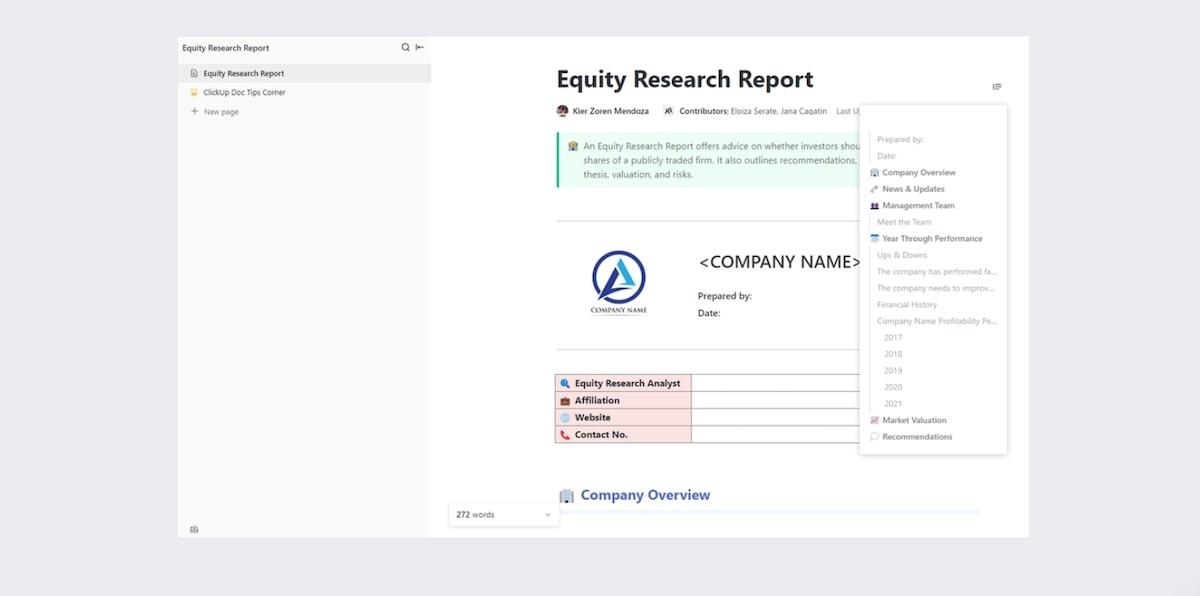
If you’re in the business of advising investors on what to do with their money, an equity report is a must-have. Instead of manually writing a new report every time, a research plan template can help you shortcut the process and get straight to the details.
Enter the Equity Research Report Template by ClickUp . It’s designed to help you share what you know in a more strategic way. Share an insight into the company overview, management team, performance, market valuation, and recommendations.
This research plan template has everything you need to present your findings to investors in an organized and effective way. Look like a pro to your investor clients and partners, and store all your data in a meaningful way to reflect on later.
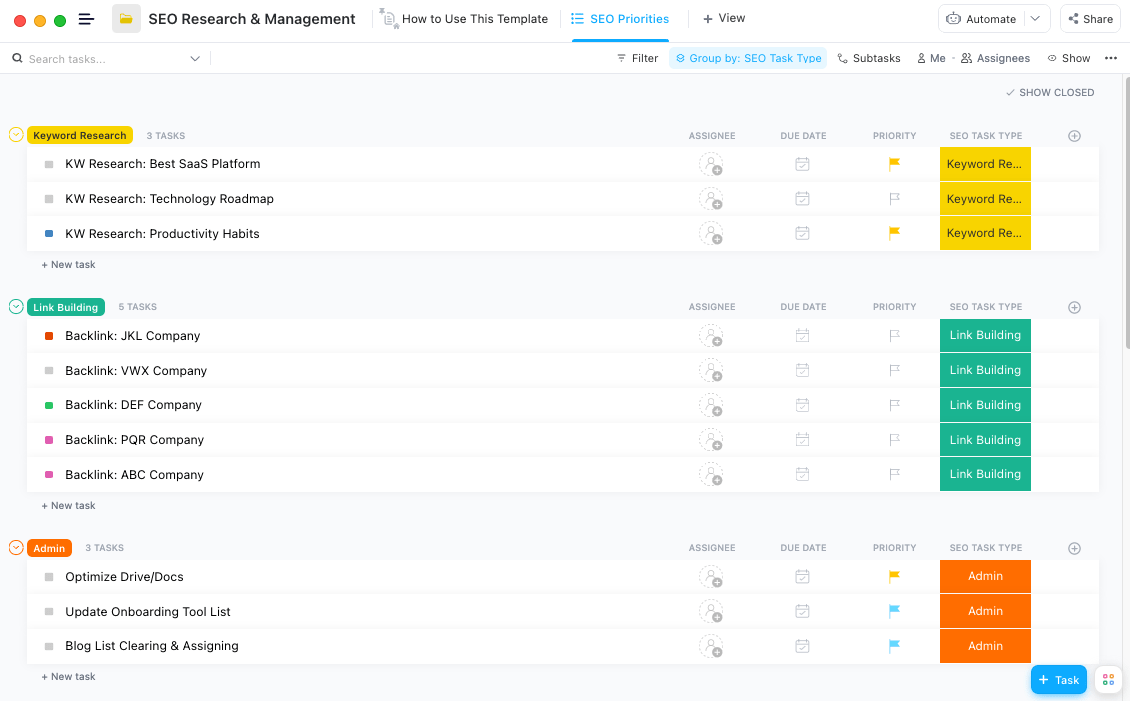
Staying on top of your company’s SEO performance is no easy task. There are so many moving parts, tools, projects, goals, and team members that you need a way to stay organized and productive.
Luckily for you, the SEO Research & Management Template by ClickUp is here to help simplify the process—and make you look good to your boss. This Folder template gives you a dedicated place to work on your SEO goals, with SEO-related custom fields and plenty of custom task types to help your team communicate progress and see roadblocks in your research plan.
Use this template to see at a glance where your SEO projects are, so you can be more proactive about how your team is working. You can also dive in to details and understand time estimates, publish dates, and where your rankings are at.
Check out these AI SEO Tools !

There’s no need to start from scratch every time you’re asked to put a research report together—instead use a template to make all your research questions and study reports as impressive as the last one.
Shortcut your way to success with the Research Report Template by ClickUp . There are sections for your executive summary, introduction, research method and techniques, results & discussion, references, and appendices. Add a report author and contributors, so you can recognize everyone that contributed to the report.
Share your research methods, approach, and findings with stakeholders and clients with this impressive template. It’s a useful foundation to help your team get organized and find a better way to update stakeholders on progress.

The Data Analysis Findings Template by ClickUp helps you present your data to everyone in a more meaningful way. Instead of presenting numbers and graphs, this template can help you go deeper into the problem statement, scope, analysis and research method, findings, and conclusion.
Use this template to help you organize your thoughts and communicate the results of your study in a transparent and easy-to-read way. Explain the context and background information alongside your approach, so your stakeholders can fully understand what the data shows.

A personal SWOT analysis can help you understand your (or your team’s) strengths, weaknesses, opportunities, and threats. This information can not only help you work better, but it means you can be more intentional about your impact on the wider company.
The Personal SWOT Analysis Template by ClickUp can help you remember to work on your SWOT analysis. Find your strengths, weaknesses or pain points, opportunities, and threats. This Task template features several custom fields designed to help you monitor your progress—including your objective, timeline, and completion rate.
This template can be a helpful reminder to focus on your personal SWOT analysis, so you can be more intentional and aware of how you contribute to your team and company’s goals and objectives. Use your personal SWOT to help you set professional goals for work and make a bigger impact.

Case studies give you a powerful insight into what your brands, clients, or competitors are doing. They’re an in-depth look into a specific area of the business, based on your personal research and findings.
Simplify the process of building your case studies with the Case Study Template by ClickUp . This template gives you a strong foundation for presenting clear, insightful case studies with your team, stakeholders, or clients. Introduce the company, your case study objective, solutions and statistics, and your insights.
Use this template to help you create case studies at scale. Present your data in a clear and concise way, with all the context your team or stakeholders need to extract the most value from the case study as possible.

Often our research helps us understand the market, our competitors, or what our own company is doing. Sometimes, it’s to help us understand incidents and challenges instead.
That’s where the Investigation Report Template by ClickUp comes in. This template is designed to help you report on accidents, complaints, incidents, and violations. Explain the case details including a summary and evidence, then move into cross-examination with space for interview questions and answers, and your conclusion.
This template is a must-have for teams and companies that want to demonstrate how they overcome challenges or handle incidents. It’s great for transparency and trust-building, and serves as a useful way to document a trail of evidence for when you need it.
Now that you have a template for your research plan, let’s dive into the details of how to write one. Follow these steps to create an effective research plan that will guide your research and help you achieve your goals.
Step 1: Identify Your Research Question
The first step in writing a research plan is to clearly define your research question or topic. This will serve as the foundation for all of your research and help guide your methods and analysis. Make sure your question is specific, relevant, and achievable within the scope of your project.
Step 2: Outline Your Objectives
Next, you should outline the specific objectives or goals of your research. These objectives should be aligned with your research question and provide a clear roadmap for your project. Be sure to make them measurable and achievable.
Step 3: Choose Your Research Methods
Based on your research question and objectives, you can now determine the appropriate methods for gathering data and conducting analysis. This may include surveys, experiments, interviews, or literature reviews. It’s important to choose methods that are suitable for your research topic and will provide reliable and accurate results.
Step 4: Create a Timeline
A research plan should include a detailed timeline for each stage of the project. This will help you stay on track and ensure that you have enough time to complete each task. Be realistic with your timeline and build in some buffer time for unexpected delays or challenges.
Step 5: Consider Ethical Implications
When conducting research, it’s important to consider any potential ethical implications. This may include obtaining consent from participants, ensuring privacy and confidentiality, or following ethical guidelines set by your institution or governing body.
Step 6: Anticipate Potential Outcomes
As with any research project, there are always potential outcomes that can arise. These could be both positive and negative, and it’s important to anticipate and plan for them. This will help you be prepared for any potential challenges or changes that may occur during your research.
Step 7: Revise and Refine Your Plan
Once you have completed the previous steps, it’s essential to review and revise your research plan as needed. It’s common for plans to change as the project progresses, so be open to making adjustments and tweaking your methods or timeline as needed.
Stay Organized with the Best Research Plan Templates
Nobody likes a disorganized project—especially a research project. Let your team breathe a sigh of relief and make your stakeholders smile when they realize you’ve got it all under control.
Use these free research plan templates to help you get organized, streamline your workflows, and keep everyone informed. Build a collection of templates that work for your projects, and make them a central part of the way you work as a team. Standardize, simplify, and get productive.
All of these research plan templates are available right now, for free, inside our template library . Get access to these user-friendly templates, 100MB of storage, 1,000+ integrations, and more with ClickUp—free now, and forever!
Questions? Comments? Visit our Help Center for support.
Receive the latest WriteClick Newsletter updates.
Thanks for subscribing to our blog!
Please enter a valid email
- Free training & 24-hour support
- Serious about security & privacy
- 99.99% uptime the last 12 months
FLEET LIBRARY | Research Guides
Rhode island school of design, create a research plan: research plan.
- Research Plan
- Literature Review
- Ulrich's Global Serials Directory
- Related Guides
A research plan is a framework that shows how you intend to approach your topic. The plan can take many forms: a written outline, a narrative, a visual/concept map or timeline. It's a document that will change and develop as you conduct your research. Components of a research plan
1. Research conceptualization - introduces your research question
2. Research methodology - describes your approach to the research question
3. Literature review, critical evaluation and synthesis - systematic approach to locating,
reviewing and evaluating the work (text, exhibitions, critiques, etc) relating to your topic
4. Communication - geared toward an intended audience, shows evidence of your inquiry
Research conceptualization refers to the ability to identify specific research questions, problems or opportunities that are worthy of inquiry. Research conceptualization also includes the skills and discipline that go beyond the initial moment of conception, and which enable the researcher to formulate and develop an idea into something researchable ( Newbury 373).
Research methodology refers to the knowledge and skills required to select and apply appropriate methods to carry through the research project ( Newbury 374) .
Method describes a single mode of proceeding; methodology describes the overall process.
Method - a way of doing anything especially according to a defined and regular plan; a mode of procedure in any activity
Methodology - the study of the direction and implications of empirical research, or the sustainability of techniques employed in it; a method or body of methods used in a particular field of study or activity *Browse a list of research methodology books or this guide on Art & Design Research
Literature Review, critical evaluation & synthesis
A literature review is a systematic approach to locating, reviewing, and evaluating the published work and work in progress of scholars, researchers, and practitioners on a given topic.
Critical evaluation and synthesis is the ability to handle (or process) existing sources. It includes knowledge of the sources of literature and contextual research field within which the person is working ( Newbury 373).
Literature reviews are done for many reasons and situations. Here's a short list:
Sources to consult while conducting a literature review:
Online catalogs of local, regional, national, and special libraries
meta-catalogs such as worldcat , Art Discovery Group , europeana , world digital library or RIBA
subject-specific online article databases (such as the Avery Index, JSTOR, Project Muse)
digital institutional repositories such as Digital Commons @RISD ; see Registry of Open Access Repositories
Open Access Resources recommended by RISD Research LIbrarians
works cited in scholarly books and articles
print bibliographies
the internet-locate major nonprofit, research institutes, museum, university, and government websites
search google scholar to locate grey literature & referenced citations
trade and scholarly publishers
fellow scholars and peers
Communication
Communication refers to the ability to
- structure a coherent line of inquiry
- communicate your findings to your intended audience
- make skilled use of visual material to express ideas for presentations, writing, and the creation of exhibitions ( Newbury 374)
Research plan framework: Newbury, Darren. "Research Training in the Creative Arts and Design." The Routledge Companion to Research in the Arts . Ed. Michael Biggs and Henrik Karlsson. New York: Routledge, 2010. 368-87. Print.
About the author
Except where otherwise noted, this guide is subject to a Creative Commons Attribution license
source document
Routledge Companion to Research in the Arts
- Next: Literature Review >>
- Last Updated: Sep 20, 2023 5:05 PM
- URL: https://risd.libguides.com/researchplan
Integrations
What's new?
Prototype Testing
Live Website Testing
Feedback Surveys
Interview Studies
Card Sorting
Tree Testing
In-Product Prompts
Participant Management
Automated Reports
Templates Gallery
Choose from our library of pre-built mazes to copy, customize, and share with your own users
Browse all templates
Financial Services
Tech & Software
Product Designers
Product Managers
User Researchers
By use case
Concept & Idea Validation
Wireframe & Usability Test
Content & Copy Testing
Feedback & Satisfaction
Content Hub
Educational resources for product, research and design teams
Explore all resources
Question Bank
Research Maturity Model
Guides & Reports
Help Center
Future of User Research Report
The Optimal Path Podcast
Maze Guides | Resources Hub
What is UX Research: The Ultimate Guide for UX Researchers
0% complete
How to create a UX research plan (examples, tactics, and templates)
Conducting UX research without a plan is like moving to another country without knowing the language—confusing and exhausting.
To avoid wasting time and resources, it’s crucial to set achievable research goals and work on developing a research plan that’s clear, comprehensive, and aligned with your overarching business goals and research strategy.
A good UX research plan sets out the parameters for your research, and guides how you’ll gather insights to inform product development. In this chapter, we share a step-by-step guide to creating a research plan, including templates and tactics for you to try. You’ll also find expert tips from Paige Bennett, Senior User Research Manager at Affirm, and Sinéad Davis Cochrane, Research Manager at Workday.

What is a UX research plan?
A UX research plan—not to be confused with a UX research strategy —is a plan to guide individual user experience (UX) research projects.
It's a living document that includes a detailed explanation of tactics, methods, timeline, scope, and task owners. It should be co-created and shared with key stakeholders, so everyone is familiar with the project plan, and product teams can meet strategic goals.
While the UX research plan should be based on strategy, it’s not the same thing. A strategy is a high-level document that contains goals, budget, vision, and expectations. Meanwhile, a plan is a detailed document explaining how the team will achieve those strategic goals. In short, a strategy is a guide, but a plan is what drives action.
What are the benefits of using a UX research plan?
Conducting research without goals and parameters is aimless. A UX research plan is beneficial for your product, user, and business—by building a plan for conducting UX research, you can:
Streamline processes and add structure
Work toward specific, measurable goals, align and engage stakeholders, save time by avoiding rework.
The structure of a research plan allows you to set timelines, expectations, and task owners, so everyone on your team is aligned and empowered to make decisions. Since there’s no second guessing what to do next or which methods to use, you’ll find your process becomes simpler and more efficient. It’s also worth standardizing your process to turn your plan into a template that you can reuse for future projects.
When you set research goals based on strategy, you’ll find it easier to track your team’s progress and keep the project in scope, on time, and on budget. With a solid, strategy-based UX research plan you can also track metrics at different stages of the project and adjust future tactics to get better research findings.
“It’s important to make sure your stakeholders are on the same page with regards to scope, timeline, and goals before you start," explains Paige Bennett, Senior User Research Manager at Affirm. That's because, when stakeholders are aligned, they're much more likely to sign off on product changes that result from UX research.
A written plan is a collaborative way to involve stakeholders in your research and turn them into active participants rather than passive observers. As they get involved, they'll make useful contributions and get a better understanding of your goals.
A UX research plan helps you save time and money quite simply because it’s easier and less expensive to make design or prototype changes than it is to fix usability issues once the product is coded or fully launched. Additionally, having a plan gives your team direction, which means they won’t be conducting research and talking to users without motive, and you’ll be making better use of your resources. What’s more, when everyone is aligned on goals, they’re empowered to make informed decisions instead of waiting for their managers’ approval.
What should a UX research plan include?
In French cuisine, the concept of mise en place—putting in place—allows chefs to plan and set up their workspace with all the required ingredients before cooking. Think of your research plan like this—laying out the key steps you need to go through during research, to help you run a successful and more efficient study.
Here’s what you should include in a UX research plan:
- A brief reminder of the strategy and goals
- An outline of the research objectives
- The purpose of the plan and studies
- A short description of the target audience, sample size, scope, and demographics
- A detailed list of expectations including deliverables, timings, and type of results
- An overview of the test methods and a short explanation of why you chose them
- The test set up or guidelines to outline everything that needs to happen before the study: scenarios, screening questions, and duration of pilot tests
- Your test scripts, questions to ask, or samples to follow
- When and how you’ll present the results
- Cost estimations or requests to go over budget
Collect all UX research findings in one place
Use Maze to run quantitative and qualitative research, influence product design, and shape user-centered products.

How to create a UX research plan
Now we’ve talked through why you need a research plan, let’s get into the how. Here’s a short step-by-step guide on how to write a research plan that will drive results.
- Define the problem statement
- Get stakeholders’ buy-in
- Identify your objectives
- Choose the right research method
- Recruit participants
- Prepare the brief
- Establish the timeline
- Decide how you’ll present your findings
1. Define the problem statement
One of the most important purposes of a research plan is to identify what you’re trying to achieve with the research, and clarify the problem statement. For Paige Bennett , Senior User Research Manager at Affirm, this process begins by sitting together with stakeholders and looking at the problem space.
“We do an exercise called FOG, which stands for ‘Fact, Observation, Guess’, to identify large gaps in knowledge,” says Paige. “Evaluating what you know illuminates questions you still have, which then serves as the foundation of the UX research project.”
You can use different techniques to identify the problem statement, such as stakeholder interviews, team sessions, or analysis of customer feedback. The problem statement should explain what the project is about—helping to define the research scope with clear deliverables and objectives.
2. Identify your objectives
Research objectives need to align with the UX strategy and broader business goals, but you also need to define specific targets to achieve within the research itself—whether that’s understanding a specific problem, or measuring usability metrics . So, before you get into a room with your users and customers, “Think about the research objectives: what you’re doing, why you’re doing it, and what you expect from the UX research process ,” explains Sinéad Davis Cochrane , Research Manager at Workday.
Examples of research objectives might be:
- Learn at what times users interact with your product
- Understand why users return (or not) to your website/app
- Discover what competitor products your users are using
- Uncover any pain points or challenges users find when navigating with your product
- Gauge user interest in and prioritize potential new features
A valuable purpose of setting objectives is ensuring your project doesn't suffer from scope creep. This can happen when stakeholders see your research as an opportunity to ask any question. As a researcher , Sinéad believes your objectives can guide the type of research questions you ask and give your research more focus. Otherwise, anything and everything becomes a research question—which will confuse your findings and be overwhelming to manage.
Sinéad shares a list of questions you should ask yourself and the research team to help set objectives:
- What are you going to do with this information?
- What decisions is it going to inform?
- How are you going to leverage these insights?
Another useful exercise to help identify research objectives is by asking questions that help you get to the core of a problem. Ask these types of questions before starting the planning process:
- Who are the users you’re designing this for?
- What problems and needs do they have?
- What are the pain points of using the product?
- Why are they not using a product like yours?
3. Get stakeholders buy-in
It’s good practice to involve stakeholders at early stages of plan creation to get everyone on board. Sharing your UX research plan with relevant stakeholders means you can gather context, adjust based on comments, and gauge what’s truly important to them. When you present the research plan to key stakeholders, remember to align on the scope of research, and how and when you’ll get back to them with results.
Stakeholders usually have a unique vision of the product, and it’s crucial that you’re able to capture it early on—this doesn’t mean saying yes to everything, but listening to their ideas and having a conversation. Seeing the UX research plan as a living document makes it much easier to edit based on team comments. Plus, the more you listen to other ideas, the easier it will be to evangelize research and get stakeholders to see the value behind it.
I expect my stakeholders to be participants, and I outline how I expect that to happen. That includes observing interviews, participating in synthesis exercises, or co-presenting research recommendations.

Paige Bennett , Senior User Research Manager at Affirm
4. Choose the right research method

Choose between the different UX research methods to capture different insights from users.
To define the research methods you’ll use, circle back to your research objectives, what stage of the product development process you’re in, and the constraints, resources, and timeline of the project. It’s good research practice to use a mix of different methods to get a more complete perspective of users’ struggles.
For example, if you’re at the start of the design process, a generative research method such as user interviews or field studies will help you generate new insights about the target audience. Or, if you need to evaluate how a new design performs with users, you can run usability tests to get actionable feedback.
It’s also good practice to mix methods that drive quantitative and qualitative results so you can understand context, and catch the user sentiment behind a metric. For instance, if during a remote usability test, you hear a user go ‘Ugh! Where’s the sign up button?’ you’ll get a broader perspective than if you were just reviewing the number of clicks on the same test task.
Examples of UX research methods to consider include:
- Five-second testing
- User interviews
- Field studies
- Card sorting
- Tree testing
- Focus groups
- Usability testing
- Diary studies
- Live website testing
Check out our top UX research templates . Use them as a shortcut to get started on your research.
5. Determine how to recruit participants
Every research plan should include information about the participants you need for your study, and how you’ll recruit them. To identify your perfect candidate, revisit your goals and the questions that need answering, then build a target user persona including key demographics and use cases. Consider the resources you have available already, by asking yourself:
- Do you have a user base you can tap into to collect data?
- Do you need to hire external participants?
- What’s your budget to recruit users?
- How many users do you need to interact with?
When selecting participants, make sure they represent all your target personas. If different types of people will be using a certain product, you need to make sure that the people you research represent these personas. This means not just being inclusive in your recruitment, but considering secondary personas—the people who may not be your target user base, but interact with your product incidentally.
You should also consider recruiting research participants to test the product on different devices. Paige explains: “If prior research has shown that behavior differs greatly between those who use a product on their phone versus their tablet, I need to better understand those differences—so I’m going to make sure my participants include people who have used a product on both devices.”
During this step, make sure to include information about the required number of participants, how you’ll get them to participate, and how much time you need per user. The main ways to recruit testers are:
- Using an online participant recruitment tool like Maze’s panel
- Putting out physical or digital adverts in spaces that are relevant to your product and user
- Reaching out to existing users
- Using participants from previous research
- Recruiting directly from your website or app with a tool like In-Product Prompts
5.1. Determine how you’ll pay them
You should always reward your test participants for their time and insights. Not only because it’s the right thing to do, but also because if they have an incentive they’re more likely to give you complete and insightful answers. If you’re hosting the studies in person, you’ll also need to cover your participants' travel expenses and secure a research space. Running remote moderated or unmoderated research is often considered to be less expensive and faster to complete.
If you’re testing an international audience, remember to check your proposed payment system works worldwide—this might be an Amazon gift card or prepaid Visa cards.
6. Prepare the brief
The next component of a research plan is to create a brief or guide for your research sessions. The kind of brief you need will vary depending on your research method, but for moderated methods like user interviews, field studies, or focus groups, you’ll need a detailed guide and script. The brief is there to remind you which questions to ask and keep the sessions on track.
Your script should cover:
- Introduction: A short message you’ll say to participants before the session begins. This works as a starting point for conversations and helps set the tone for the meeting. If you’re testing without a moderator, you should also include an introductory message to explain what the research is about and the type of answers they should give (in terms of length and specificity).
- Interview questions: Include your list of questions you’ll ask participants during the sessions. These could be examples to help guide the interviews, specific pre-planned questions, or test tasks you’ll ask participants to perform during unmoderated sessions.
- Outro message: Outline what you'll say at the end of the session, including the next steps, asking participants if they are open to future research, and thanking them for their time. This can be a form you share at the end of asynchronous sessions.
It’s crucial you remember to ask participants for their consent. You should do this at the beginning of the test by asking if they’re okay with you recording the session. Use this space to lay out any compensation agreements as well. Then, ask again at the end of the session if they agree with you keeping the results and using the data for research purposes. If possible, explain exactly what you’ll do with their data. Double check and get your legal team’s sign-off on these forms.
7. Establish the timeline
Next in your plan, estimate how long the research project will take and when you should expect to review the findings. Even if not exact, determining an approximate timeline (e.g., two-three weeks) will enable you to manage stakeholders’ expectations of the process and results.
Many people believe UX research is a lengthy process, so they skip it. When you set up a timeline and get stakeholders aligned with it, you can debunk assumptions and put stakeholders’ minds at ease. Plus, if you’re using a product discovery tool like Maze, you can get answers to your tests within days.
8. Decide how you’ll present your findings
When it comes to sharing your findings with your team, presentation matters. You need to make a clear presentation and demonstrate how user insights will influence design and development. If you’ve conducted UX research in the past, share data that proves how implementing user insights has improved product adoption.
Examples of ways you can present your results include:
- A physical or digital PDF report with key statistics and takeaways
- An interactive online report of the individual research questions and their results
- A presentation explaining the results and your findings
- A digital whiteboard, like Miro, to display the results
In your plan, mention how you’ll share insights with the product team. For example, if you’re using Maze, you can start by emailing everyone the ready-to-share report and setting up a meeting with the team to identify how to bring those insights to life. This is key, because your research should be the guiding light for new products or updates, if you want to keep development user-centric. Taking care over how you present your findings will impact whether they’re taken seriously and implemented by other stakeholders.
Templates for UX research
Whether you’re creating the plan yourself or are delegating this responsibility to your team, here are six research templates to get started:
- UX research plan template : This editable Miro research project plan example helps you brainstorm user and business-facing problems, objectives, and questions
- UX research brief : You need a clear brief before you conduct UX research—Milanote shares a template that will help you simplify the writing process
- User testing synthesis : Trello put together a sample board to organize user testing notes—you can use this as a guide, but change the titles to fit your UX research purposes
- Usability testing templates : At Maze, we’ve created multiple templates for conducting specific UX research methods—this list will help you create different remote usability tests
- Information architecture (IA) tests template : The way you organize the information in your website or app can improve or damage the user experience—use this template to run IA tests easily
- Feedback survey templates : Ask users anything through a survey, and use these templates to get creative and simplify creation
Everything you need to know about UX research plans
We all know that a robust plan is essential for conducting successful UX research. But, in case you want a quick refresher on what we’ve covered:
- Using a UX research strategy as a starting point will make your plan more likely to succeed
- Determine your research objectives before anything else
- Use a mix of qualitative and quantitative research methods
- Come up with clear personas so you can recruit and test a group of individuals that’s representative of your real end users
- Involve stakeholders from the beginning to get buy-in
- Be vocal about timelines, budget, and expected research findings
- Use the insights to power your product decisions and wow your users; building the solution they genuinely want and need
UX research can happen at any stage of the development lifecycle. When you build products with and for users, you need to include them continuously at various stages of the process.
It’s helpful to explore the need for continuous discovery in your UX research plan and look for a tool like Maze that simplifies the process for you. We’ll cover more about the different research methods and UX research tools in the upcoming chapters��—ready to go?
Elevate your UX research workflow
Discover how Maze can streamline and operationalize your research plans to drive real product innovation while saving on costs.
Frequently asked questions
What’s the difference between a UX research plan and a UX research strategy?
The difference between a UX research plan and a UX research strategy is that they cover different levels of scope and detail. A UX research plan is a document that guides individual user experience (UX) research projects. UX research plans are shared documents that everyone on the product team can and should be familiar with. The UX research strategy, on the other hand, outlines the high-level goals, expectations, and demographics of the discovery.
What should you include in a user research plan?
Here’s what to include in a user research plan:
- Problem statement
- Research objectives
- Research methods
- Participants' demographics
- Recruitment plan
- User research brief
- Expected timeline
- How to present findings
How do you write a research plan for UX design?
Creating a research plan for user experience (UX) requires a clear problem statement and objectives, choosing the right research method, recruiting participants and briefing them, and establishing a timeline for your project. You'll also need to plan how you'll analyze and present your findings.
Generative Research: Definition, Methods, and Examples
Have a language expert improve your writing
Run a free plagiarism check in 10 minutes, automatically generate references for free.
- Knowledge Base
- Research process
- How to Write a Research Proposal | Examples & Templates
How to Write a Research Proposal | Examples & Templates
Published on 30 October 2022 by Shona McCombes and Tegan George. Revised on 13 June 2023.

A research proposal describes what you will investigate, why it’s important, and how you will conduct your research.
The format of a research proposal varies between fields, but most proposals will contain at least these elements:
Introduction
Literature review.
- Research design
Reference list
While the sections may vary, the overall objective is always the same. A research proposal serves as a blueprint and guide for your research plan, helping you get organised and feel confident in the path forward you choose to take.
Table of contents
Research proposal purpose, research proposal examples, research design and methods, contribution to knowledge, research schedule, frequently asked questions.
Academics often have to write research proposals to get funding for their projects. As a student, you might have to write a research proposal as part of a grad school application , or prior to starting your thesis or dissertation .
In addition to helping you figure out what your research can look like, a proposal can also serve to demonstrate why your project is worth pursuing to a funder, educational institution, or supervisor.
Research proposal length
The length of a research proposal can vary quite a bit. A bachelor’s or master’s thesis proposal can be just a few pages, while proposals for PhD dissertations or research funding are usually much longer and more detailed. Your supervisor can help you determine the best length for your work.
One trick to get started is to think of your proposal’s structure as a shorter version of your thesis or dissertation , only without the results , conclusion and discussion sections.
Download our research proposal template
Prevent plagiarism, run a free check.
Writing a research proposal can be quite challenging, but a good starting point could be to look at some examples. We’ve included a few for you below.
- Example research proposal #1: ‘A Conceptual Framework for Scheduling Constraint Management’
- Example research proposal #2: ‘ Medical Students as Mediators of Change in Tobacco Use’
Like your dissertation or thesis, the proposal will usually have a title page that includes:
- The proposed title of your project
- Your supervisor’s name
- Your institution and department
The first part of your proposal is the initial pitch for your project. Make sure it succinctly explains what you want to do and why.
Your introduction should:
- Introduce your topic
- Give necessary background and context
- Outline your problem statement and research questions
To guide your introduction , include information about:
- Who could have an interest in the topic (e.g., scientists, policymakers)
- How much is already known about the topic
- What is missing from this current knowledge
- What new insights your research will contribute
- Why you believe this research is worth doing
As you get started, it’s important to demonstrate that you’re familiar with the most important research on your topic. A strong literature review shows your reader that your project has a solid foundation in existing knowledge or theory. It also shows that you’re not simply repeating what other people have already done or said, but rather using existing research as a jumping-off point for your own.
In this section, share exactly how your project will contribute to ongoing conversations in the field by:
- Comparing and contrasting the main theories, methods, and debates
- Examining the strengths and weaknesses of different approaches
- Explaining how will you build on, challenge, or synthesise prior scholarship
Following the literature review, restate your main objectives . This brings the focus back to your own project. Next, your research design or methodology section will describe your overall approach, and the practical steps you will take to answer your research questions.
To finish your proposal on a strong note, explore the potential implications of your research for your field. Emphasise again what you aim to contribute and why it matters.
For example, your results might have implications for:
- Improving best practices
- Informing policymaking decisions
- Strengthening a theory or model
- Challenging popular or scientific beliefs
- Creating a basis for future research
Last but not least, your research proposal must include correct citations for every source you have used, compiled in a reference list . To create citations quickly and easily, you can use our free APA citation generator .
Some institutions or funders require a detailed timeline of the project, asking you to forecast what you will do at each stage and how long it may take. While not always required, be sure to check the requirements of your project.
Here’s an example schedule to help you get started. You can also download a template at the button below.
Download our research schedule template
If you are applying for research funding, chances are you will have to include a detailed budget. This shows your estimates of how much each part of your project will cost.
Make sure to check what type of costs the funding body will agree to cover. For each item, include:
- Cost : exactly how much money do you need?
- Justification : why is this cost necessary to complete the research?
- Source : how did you calculate the amount?
To determine your budget, think about:
- Travel costs : do you need to go somewhere to collect your data? How will you get there, and how much time will you need? What will you do there (e.g., interviews, archival research)?
- Materials : do you need access to any tools or technologies?
- Help : do you need to hire any research assistants for the project? What will they do, and how much will you pay them?
Once you’ve decided on your research objectives , you need to explain them in your paper, at the end of your problem statement.
Keep your research objectives clear and concise, and use appropriate verbs to accurately convey the work that you will carry out for each one.
I will compare …
A research aim is a broad statement indicating the general purpose of your research project. It should appear in your introduction at the end of your problem statement , before your research objectives.
Research objectives are more specific than your research aim. They indicate the specific ways you’ll address the overarching aim.
A PhD, which is short for philosophiae doctor (doctor of philosophy in Latin), is the highest university degree that can be obtained. In a PhD, students spend 3–5 years writing a dissertation , which aims to make a significant, original contribution to current knowledge.
A PhD is intended to prepare students for a career as a researcher, whether that be in academia, the public sector, or the private sector.
A master’s is a 1- or 2-year graduate degree that can prepare you for a variety of careers.
All master’s involve graduate-level coursework. Some are research-intensive and intend to prepare students for further study in a PhD; these usually require their students to write a master’s thesis . Others focus on professional training for a specific career.
Critical thinking refers to the ability to evaluate information and to be aware of biases or assumptions, including your own.
Like information literacy , it involves evaluating arguments, identifying and solving problems in an objective and systematic way, and clearly communicating your ideas.
Cite this Scribbr article
If you want to cite this source, you can copy and paste the citation or click the ‘Cite this Scribbr article’ button to automatically add the citation to our free Reference Generator.
McCombes, S. & George, T. (2023, June 13). How to Write a Research Proposal | Examples & Templates. Scribbr. Retrieved 13 May 2024, from https://www.scribbr.co.uk/the-research-process/research-proposal-explained/
Is this article helpful?
Shona McCombes
Other students also liked, what is a research methodology | steps & tips, what is a literature review | guide, template, & examples, how to write a results section | tips & examples.
We use cookies to personalize and deliver appropriate content. By clicking "Accept" you agree to our terms.
User Research
Research Plan
Explore real examples of Research Plans
Learn how the best operators in tech think about research plans. explore 33 examples of research plans so you never have to start from scratch..
Updated May 1, 2024

What is a Research Plan?
A research plan outlines the objectives, methodology, timeline, and resources needed for a research project, acting as a roadmap for systematic investigation. Reforge can enhance the development and execution of research plans with tools and strategies that streamline each phase, from data collection to analysis and interpretation. Our resources help researchers define clear scopes and approaches, improve efficiency, and effectively communicate with stakeholders.
Popular Research Plan examples
Explore 10 most popular Research Plans from top companies.

Jobs to be Done User Research Guide at Replit
by Tabish Gilani , Created as Head of Product (Director) @ Replit
I created this to teach others how we conducted user interviews at Replit using a Jobs To Be Done (JTBD) framework. It covers everything from how to source, prep, and conduct user interviews to get the most learnings.
- Tabish created this User Research Guide to teach others at Replit how to conduct interviews using a Jobs To Be Done (JTBD) framework.
- It covers everything from how to source, prep, and conduct user interviews to get the most learnings.
- Segmenting users by behavior, demographics, geography, and psychographics is important for targeted research.
- The interview process involves active listening, open-ended questions, and avoiding leading questions.

Automated user feedback collection at Reforge
by Dan Wolchonok , Created as Head of Data @ Reforge
This feedback collection process for analyzing customer input helped me get the people's attention, re-prioritize roadmaps, and rally the team around how to allocate resources for work on a payments page.
- Dan used a feedback collection process to analyze customer input and improve metrics.
- The process involved emailing targeted users, responding to feedback, and aggregating it in a spreadsheet.
- The feedback helped Dan and his team understand why conversion metrics were weakening and make improvements to their product.

Customer Discovery Interview Log at Chegg
by Jack McDermott , Created as Senior Manager, Growth @ Chegg
I used this interview log to get a better sense of our target users, their motivations, and their willingness to pay.
- Jack describes how he communicates the goals of research to participants and internal team members.
- He emphasizes the importance of identifying key business questions and avoiding spreading oneself too thin.
- Jack recommends using visual mediums to display customer insights and elevating representative quotes to drive points home.

Design Methods Research Planning for Facebook Audience Insights
by Behzod Sirjani , Created as Senior User Experience Researcher @ Facebook
I used this framework to design a creative research approach that would get us the evidence we needed to redesign the Audience Insights tool.
- Behzod redesigned the Audience Insights tool, which was underloved and needed a redesign.
- They used a qualitative and fun approach to understand how and why people wanted to use the tool.
- Rolling recruitment was used to reach out to high-value customers and learn in as many directions as possible.

User Research Brief at Clover
by Monil Shah , Created as Lead Product Manager - Subscription Growth and Monetization @ Clover
At Clover the PM uses this template to provide details to their Designer or User Researcher and then design their study based on input they gather here.
- Monil's team used this template to guide their user research for a new subscription product.
- The research helped inform product decisions and influence stakeholders.
- Monil discusses how the team made tradeoff decisions about how to conduct research studies and aimed to move towards continuous discovery.

Enterprise App Management Research - Discussion Guide at Slack
by Behzod Sirjani , Created as Head of Research Operations @ Slack
In order to better understand how to improve the experience of managing Slack at scale, I created this discussion guide to conducted interviews with Slack Admins at our largest customers.
- Behzod created a discussion guide to conduct interviews with Slack Admins at large customers.
- The guide includes warm-up questions, context questions, and core questions about managing Slack.
- The guide emphasizes the importance of building rapport, getting consent to record, and asking open-ended questions.

Power Users Research at Lemon.io
by Lisa Dziuba , Created as Head of Growth Product Marketing @ Lemon.io
When I started the power user research at Lemon.io, my first action was to create a well-structured research project. The research project (research plan) is a must-have PMM document that focuses all the research efforts on the business outcomes. The beauty of this document lies in its ability to keep research on track and be a repository of all docs and tasks, as well as one source of truth.
- Lisa defined objectives for Power Users Research tailored to Lemon.io's company OKRs and gathered input from the founders and team.
- User research relies on collaboration across customer-facing teams and requires a well-structured research project to keep research on track.
- The Power Users Research project involved gathering insights from customer-facing teams on user data since 2015, searching 56 data points, and forming meaningful insights to drive revenue growth.

Feedback River Process at Toptal
by Paul Timmermann , Created as Senior Director of Product @ Toptal
This artifact outlines how we actively use feedback rivers at Toptal to continue to deliver the best experience for our talent and clients.
- This artifact outlines how Paul's team actively uses feedback rivers at Toptal to continue to deliver the best experience for both talent and clients.
- The Feedback River process involves consistently reviewing customer feedback and adding structured insights using tools like Slack and Google Sheets.
- The Feedback River provides a consistent pulse on user sentiments, captures valuable insights, and seamlessly integrates workflows to inform future decision-making processes.

Audience strategy research sprint at Heap
by Shelly Eisen-Livneh , Created as Sr. Product Marketing Manager - Solutions & Audience Strategy @ Heap
At Heap we conducted this lean research approach to help inform GTM/product roadmap iterations.
- Shelly conducted lean research to inform GTM/product roadmap iterations at Heap.
- The research included short-term and long-term GTM recommendations for two personas.
- The research also analyzed org structures, buying committee roles, and updated messaging for the personas.

Automatically scheduling customer interviews at VEED
by Thomas Christensen , Created as Senior Product Manager, Growth @ VEED.IO
At Veed we book customer interview sessions based on user behavior by automatically filtering to a set of users, emailing them, and booking time across the team's shared availability.
- Thomas and the activation team at Veed.io conducted continuous user interviews to improve the initial experience with Veed.
- They aimed to speak with three types of users: habit users, "aha" users, and new users who didn't make their first video.
- They used existing tools like Amplitude, customer.io, Calendly, Zapier, and Notion to automate the process of booking and documenting user research sessions.
View all 33 examples of Research Plans.
Other popular Research Plans
Explore the full catalog of Research Plan resources to get inspired

Behzod Sirjani, Created as Head of Research Operations @ Slack

Lisa Dziuba, Created as Head of Growth Product Marketing @ Lemon.io

Paul Timmermann, Created as Senior Director of Product @ Toptal

Shelly Eisen-Livneh, Created as Sr. Product Marketing Manager - Solutions & Audience Strategy @ Heap

Thomas Christensen, Created as Senior Product Manager, Growth @ VEED.IO

Daniel Andor, Created as Product Design and Strategy Specialist | Founder @ Durran
This is the framework I use to walk clients through a thorough product discovery process, setting up the entire remaining development of the product.

Olena Avramenko, Created as Head of Product (Interim) @ Sitly
I created this research plan to understand how parents in different markets search and select babysitters on Sitly.

Ali Riehle, Created as Lead Product Designer @ Reforge
I created this diagram to help communicate and visualize our team’s cross-functional research approach across about two weeks.

Kanika Tibrewala, Created as UX Design and Research Lead @ Swiggy
We used this framework to launch our platform in just 9 days! It helped us clearly see where we were succeeding, failing, and what we needed to do next.

Behzod Sirjani, Created as Founder @ Yet Another Studio
I created this discussion guide and email copy for an early stage company who wanted to better understand developer workflows to inform a tool they were building.
View all 33 examples of Research Plans
Reforge has everything you need to get more done, faster

Explore artifacts of all kinds
Browse other popular categories to get ideas for your own work
Topics related to Research Plan
- Start diagramming Start diagramming
Figma design
Design and prototype in one place

Collaborate with a digital whiteboard

Translate designs into code

Get the desktop, mobile, and font installer apps
See the latest features and releases
- Prototyping
- Design systems
- Wireframing
- Online whiteboard
- Team meetings
- Strategic planning
- Brainstorming
- Diagramming
- Product development
- Web development
- Design handoff
- Product managers
Organizations
Config 2024
Register to attend in person or online — June 26–27

Creator fund
Build and sell what you love
User groups
Join a local Friends of Figma group
Learn best practices at virtual events
Customer stories
Read about leading product teams
Stories about bringing new ideas to life

Get started
- Developer docs
- Best practices
- Reports & insights
- Resource library
- Help center
FigJam Prepare for your next experiment with our research plan example
From user personas and stakeholder analyses to a research plan sample that can help form a strong foundation for your experimentation, FigJam’s has plenty of resources to help you meet your research objectives.

Research plan
Use this interactive template to collaborate with your team and create a top-notch strategic research plan that will uncover the answers you’re looking for.
Ready, set, plan!
Keep your team on track by agreeing on important aspects of your test and providing stakeholders with the why behind the what of your plan.
Identify important details: Define your research questions, goals, and methods from the onset to keep you focused throughout.
Set yourself up for success : Develop an outline that’ll keep you on track from start to finish.
Gather data: Create a plan that allows you to assemble and analyze the data you need to improve your users’ experience.

FigJam When the planning gets tough, the tough get planning
Work together to align your team’s ideas and goals for the ultimate research plan, complete with a clear objective, timeline, and other necessary components. Brainstorm and swap thoughts with ease, then use your insights to create a game plan that brings every research question to the real world.
Keep your eyes on the prize
With everyone on the same page—or plan—you can stay focused on a clear-cut outcome. Set your plan in motion, then use FigJam’s other templates to move forward into the next phase with ease.

User personas
Gain a better understanding of your target audience’s needs.

Stakeholder analysis
Identify and prioritize your stakeholders to ensure all participantsare satisfied.
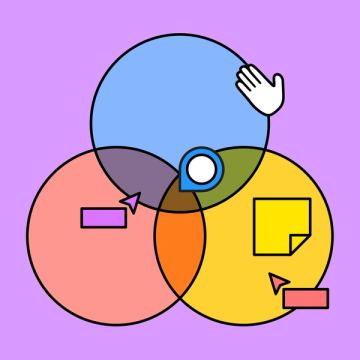
Other templates from the community
Gather all the right tools to execute your plan and analyze your data.
What is a research plan?
A research plan example is a document that introduces your main question and how you intend to uncover the answer. They often include details like the surrounding context, objectives, methods, budget, timeline, and more to help you learn more about and eventually solve a customer’s pain point or an ineffective interface.
What are the contents of a research plan?
Research plans generally contain information such as:
Background information with general insights into what you already know, why you’re conducting the study, and what the problem is
The objective of your research and what you’re trying to accomplish
Research questions , both primary and secondary, to guide your experiment
The participants and recruitment methods to bring together a relevant, unbiased sample group
Your budget and timeline to plan around any logistical constraints
Intended results , describing what you hope to or anticipate finding
Out of scope elements that will not factor into your experiment
How to write a research plan?
Begin by gathering your team, downloading a shareable FigJam sample research plan, and brainstorming to figure out the issues you’re trying to understand and solve. With that information, you can narrow down your team’s top suggestions to one concrete objective. Then, decide on a few select research questions that will help you achieve your research goal.
As with any good scientific process, you’ll want to thoroughly interrogate and refine your questions using insight from your entire group, until you’re confident in your main question and research method. Don’t be afraid to solicit feedback, leave comments or suggestions, and move questions around—the flexibility is part of what makes FigJam’s market research plan template so valuable to any experiment.
Other templates you might like

Explore 1,000+ templates on the Figma community
Explore even more templates, widgets, and plugins—all built by the Figma community.

Ready to level up your insights?
Get ready to streamline, scale and supercharge your research. Fill out this form to request a demo of the InsightHub platform and discover the difference insights empowerment can make. A member of our team will reach out within two working days.
Cost effective insights that scale
Quality insight doesn't need to cost the earth. Our flexible approach helps you make the most of research budgets and build an agile solution that works for you. Fill out this form to request a call back from our team to explore our pricing options.
- What is InsightHub?
- Data Collection
- Data Analysis
- Data Activation
- Research Templates
- Information Security
- Our Expert Services
- Support & Education
- Consultative Services
- Insight Delivery
- Research Methods
- Sectors We Work With
- Meet the team
- Advisory Board
- Press & Media
- Book a Demo
- Request Pricing

Embark on a new adventure. Join Camp InsightHub, our free demo platform, to discover the future of research.

Read a brief overview of the agile research platform enabling brands to inform decisions at speed in this PDF.
InsightHub on the Blog
- Surveys, Video and the Changing Face of Agile Research
- Building a Research Technology Stack for Better Insights
- The Importance of Delegation in Managing Insight Activities
- Common Insight Platform Pitfalls (and How to Avoid Them)
- Support and Education
- Insight Delivery Services

Our services drive operational and strategic success in challenging environments. Find out how.

Close Connections bring stakeholders and customers together for candid, human conversations.
Services on the Blog
- Closing the Client-Agency Divide in Market Research
- How to Speed Up Fieldwork Without Compromising Quality
- Practical Ways to Support Real-Time Decision Making
- Developing a Question Oriented, Not Answer Oriented Culture
- Meet the Team

The FlexMR credentials deck provides a brief introduction to the team, our approach to research and previous work.

We are the insights empowerment company. Our framework addresses the major pressures insight teams face.
Latest News
- Insight as Art Shortlisted for AURA Innovation Award
- FlexMR Launch Video Close Connection Programme
- VideoMR Analysis Tool Added to InsightHub
- FlexMR Makes Shortlist for Quirks Research Supplier Award
- Latest Posts
- Strategic Thinking
- Technology & Trends
- Practical Application
- Insights Empowerment
- View Full Blog Archives

Discover how to build close customer connections to better support real-time decision making.

What is a market research and insights playbook, plus discover why should your team consider building one.

Featured Posts
- Five Strategies for Turning Insight into Action
- How to Design Surveys that Ask the Right Questions
- Scaling Creative Qual for Rich Customer Insight
- How to Measure Brand Awareness: The Complete Guide
- All Resources
- Client Stories
- Whitepapers
- Events & Webinars
- The Open Ideas Panel
- InsightHub Help Centre
- FlexMR Client Network

The insights empowerment readiness calculator measures your progress in building an insight-led culture.

The MRX Lab podcast explores new and novel ideas from the insights industry in 10 minutes or less.
Featured Stories
- Specsavers Informs Key Marketing Decisions with InsightHub
- The Coventry Panel Helps Maintain Award Winning CX
- Isagenix Customer Community Steers New Product Launch
- Curo Engage Residents with InsightHub Community
- Tech & Trends /
How to Write a Market Research Plan (+ Free Template)
Chris martin, market research room 101: round 2.
On Thursday 9th May 2024, Team Russell and Team Hudson duelled in a panel debate modelled off the po...
Sophie Grieve-Williams
- Insights Empowerment (29)
- Practical Application (170)
- Research Methods (283)
- Strategic Thinking (191)
- Survey Templates (7)
- Tech & Trends (387)
A market research plan, similar to a brief, is a vital document that details important information about your market research project. Though it is often an overlooked step of the market research process , an effective plan is often a critical factor in determining whether or not your market research efforts are successful.
Why? Because a well-thought through plan, more so than objectives alone, can be a vital instrument in focusing your investment. It ensures you know, ahead of the commencement date, the timeline, budget and desired outcomes from the project. It can even be used as a tool for receiving quicker sign-off from management when embarking on a new venture.
But it’s also important to remember that the research plan is not just for your team. To make full use of this document, it should be written in a way that can be distributed to agency partners as well – ensuring that your insight team and specialist partners are all working towards the same goal.
Tips for Crafting a Successful Plan
The first rule of writing a successful market research plan is to keep it short. The perfect length is between 1-2 pages, but as an absolute maximum try to ensure that it never exceeds 3. This will give you enough space to explain the background, scope and practicalities of the project while ensuring it is concise enough to be read in full. Throughout these few short pages, the tone of your plan should be informative. Remember that you are outlining information that you already know.
Write in a way that holistically encompasses all aspects of the project. Throughout the duration of your scripting, data collection, analysis and reporting stages of your project you should always be referring back to this document in order to remain focused. As any researcher knows, one of the biggest challenges in any research project is staying true to your original objectives.
With both exploratory and confirmatory research alike, new information is likely to arise which may spark other ideas or bring light to previously unknown issues. Remember these, but set them aside for further investigation at a later date. Travelling too far down the rabbit hole is the quickest way to overspend and under deliver on your original goal.
The 10 Elements of the Best Research Plans
First, let me preface this with a reminder: every project is different. A long term co-creation community will have different needs and requirements to a customer feedback survey or ad testing project. However, despite this – it is important to give equal consideration to all projects, and plan each with the same high degree of meticulous care. With this in mind, these are the 10 key aspects we recommend that all research plans should include:
1. Overview
Use this first section to outline the background to the problem that you are attempting to solve. Include background information on the business to provide context, as well as the circumstances that have led to the need for research. Overviews should be limited to 200 words at most, with most of the word count dedicated to the business circumstances & challenges surrounding the research.
2. Objectives
Arguably the most important aspect of the entire document, objectives should be in bullet point format. List 3-5 of the decisions or initiatives that the research will inform – this will become the remit of the project. Below are a few examples of both well and poorly written objectives:
Well written research objectives:
- Understand the channels in which our customers are most comfortable shopping, in order to decide which should be prioritised in the 2017 Q1 budget
- Develop an active co-creation community that contributes 2 user-generated product improvements for testing to the R & D team per month
- Learn what is leading to an increase in customer churn so that a new retention strategy can be put in place within 12 weeks
Poorly written research objectives:
- Survey 1,000 potential customers to find out how our products can be improved
- Develop a panel of employees that are able to provide answers to research questions on an ad-hoc basis
- Learn how our company is perceived in comparison to competitors and how we can stand out in the marketplace
3. Deliverable outcomes
This section acts as a list what you expect to be produced at the end of the project. This can include, but is not limited to: a target number of responses you expect to receive, descriptions of how the data should be presented and the extent to which the data will be used to inform future decisions. In long term projects such as panels or communities, this may include a target for the amount of decisions that research is expected to inform and/or a pipeline for new ideas in exploratory studies.
4. Target audience
Different to sample, your target audience describes the population that you wish to research. This can be defined by a number of factors depending on the nature of your project. Some of the most common include: demographics, psychographics, life stages and company/ product interaction.
5. Sample plan
The sample plan should be used to indicate the amount of participants you wish to research, as well as a breakdown of each group. This will be affected by the choice to use qualitative, quantitative or multi-method approaches, as well as the estimated size of the target population.
6. Research Methods
List the different research methods that you plan to use in your project. This will be used by your team and agency partners to ensure that the insight you need comes from the most appropriate tools. Be sure to include any non-traditional methods you plan to use as well – it’s important that your team are aware of how data will be captured, even if it is being gathered by an experimental technique.
7. Timeline
These usually take the form of a Gantt chart, but can vary depending on the scope and length of your project. Try to break down tasks as much as possible but be wary of dependencies within your chart. Be sure to schedule enough time in case some research tasks over-run or response rates are lower than expected.
Perhaps the most dreaded aspect of any research plan, budgeting is never easy. But by providing a breakdown of costs and outlining which elements of the project require most investment, a well-planned budget can be a benefit rather than a hurdle.
9 & 10. Ethical and Further considerations
Finally, you should outline any ethical/ other considerations or issues that may arise throughout the course of your project. Whether these are as simple as a conflict of interest or a concern about supplier relationships – this is your chance to address any problems that may arise before they do.
Free Market Research Plan Template
Use this link to download our free market research plan template . The template comes complete with each of the sections outlined above, with instructions on usage and tips on how to make the most out of it. Currently available in .docx format, please email [email protected] if you have any problems with the download.
What do you believe should be included in a successful market research plan? Share your advice with us in the comments below and join the conversation.
About FlexMR
We are The Insights Empowerment Company. We help research, product and marketing teams drive informed decisions with efficient, scalable & impactful insight.
About Chris Martin
Chris is an experienced executive and marketing strategist in the insight and technology sectors. He also hosts our MRX Lab podcast.
Stay up to date
You might also like....

On Thursday 9th May 2024, Team Russell and Team Hudson duelled in a panel debate modelled off the popular TV show Room 101. This mock-gameshow-style panel, hosted by Keen as Mustard Marketing's Lucy D...

Delivering AI Powered Qual at Scale...
It’s safe to say artificial intelligence, and more specifically generative AI, has had a transformative impact on the market research sector. From the contentious emergence of synthetic participants t...

How to Use Digital Ethnography and ...
In one way or another, we’ve all encountered social media spaces. Whether you’ve had a Facebook account since it first landed on the internet, created different accounts to keep up with relatives duri...


Researched by Consultants from Top-Tier Management Companies

Powerpoint Templates
Icon Bundle
Kpi Dashboard
Professional
Business Plans
Swot Analysis
Gantt Chart
Business Proposal
Marketing Plan
Project Management
Business Case
Business Model
Cyber Security
Business PPT
Digital Marketing
Digital Transformation
Human Resources
Product Management
Artificial Intelligence
Company Profile
Acknowledgement PPT
PPT Presentation
Reports Brochures
One Page Pitch
Interview PPT
All Categories
Top 10 Research Plan Templates with Samples and Examples
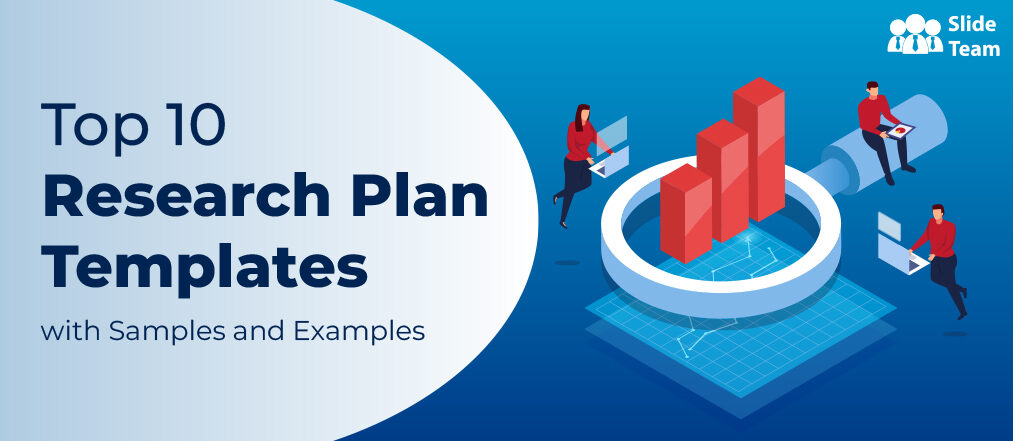
Mohammed Sameer
"Research is creating new knowledge."- Neil Armstrong
When we dwell on what we enjoy most about our work — what excites us, what inspires us, what sparks the next big "a-ha" moment — we seldom consider processes or documentation.
But when we reflect on what frustrates us about our work—"next steps" that get delayed, projects that feel unfocused, minor details that obstruct our plans—we frequently blame processes and documentation.
To figure a way out of the dilemma, consider using a research plan to structure your work.
Even if you don't use a research plan on a regular basis or are unaware of what it means, it can help your next project run more smoothly.
This blog shows you how to write a research plan in a jiffy (with templates) that can save you hours of work, on balance.
A research plan template is a concise reference point for your project's timeline, goals, key players, and objectives.
Research plan templates provide an overview of the initiative and serve as a project kick-off document. Its beauty lies in its ability to keep your team on track, to ensure that overarching goals are well-defined and agreed upon, and to ensure that the research meets those goals.
Let's explore our top 10 research plan templates .
Template 1: Business Research Plan PPT Template
Framing a successful business research plan involves dealing with many headaches. A well-structured PPT Template is the answer in all cases. SlideTeam presents a business research plan design that explains project context and objectives, a plan of action, and a timeline to track progress. Download now.

Download this template
Template 2: Business Marketing Research Plan PPT Framework
Here’s a six-step business marketing research plan that every company needs. It helps you:
- Know your Business
- Identify your Target Market
- Analyze Competitors
- Outline Strategy
- Set a Budget
Download it now.
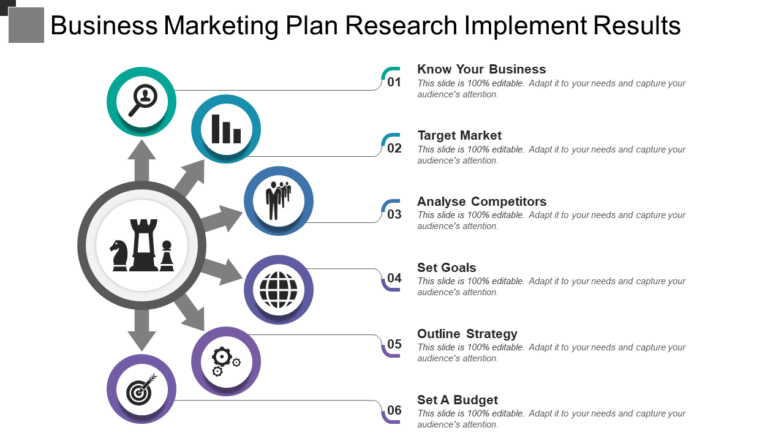
Get this template
Template 3: Timeframe for Business Research Plan
Construct a relevant timeframe for your business research plan using this illustrative template. It has multiple stages, including Industry Profiling, Market Assessment, Customer Persona, and Market Entry Strategies. Each stage is allotted a time frame (in weeks) to ensure your research plan is progressing. Get it now.
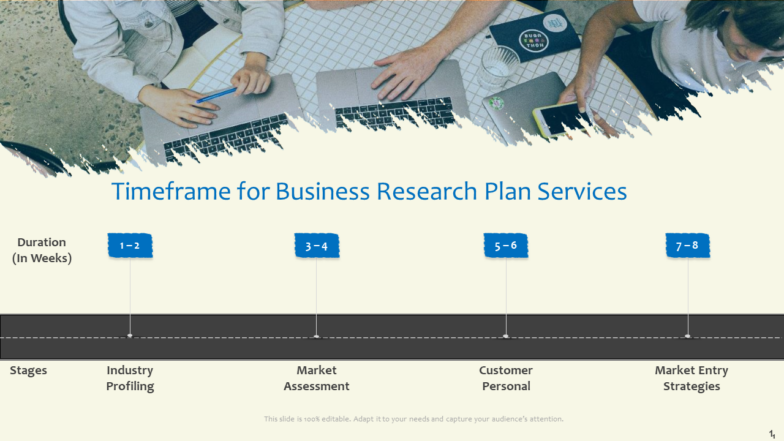
Grab this template
Template 4: Marketing Research Plan PPT Design
Using our template, perform an in-depth examination of how your product or service will perform in a specified area. It facilitates an analysis of the market and an assessment of the demand for your product or service. With the help of the template, you can even get to evaluate competitors. Get it now.
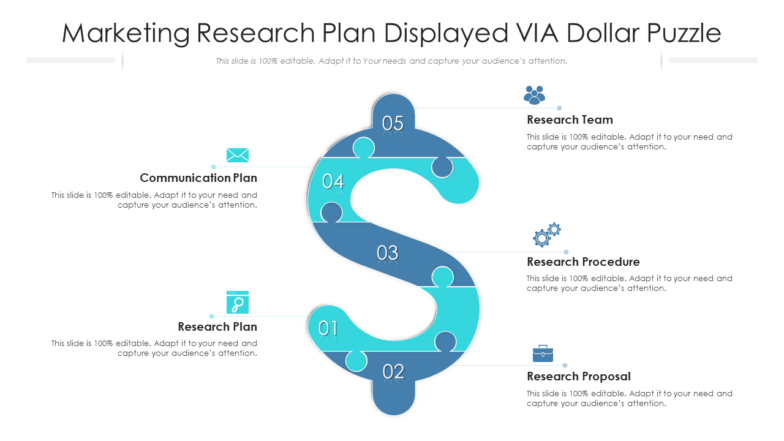
Template 5: Customer Research Plan PPT Template
Building a customer research plan from scratch will seem like a mountain to climb. With this PPT Template, you can avoid this struggle. It has five detailed steps that encompass the core of a customer research plan:
- Identify the Problem
- Develop the Research Plan
- Conduct Research
- Analyze and Report Findings
- Take Action in terms of Budget, Personnel, etc.
Grab it now.
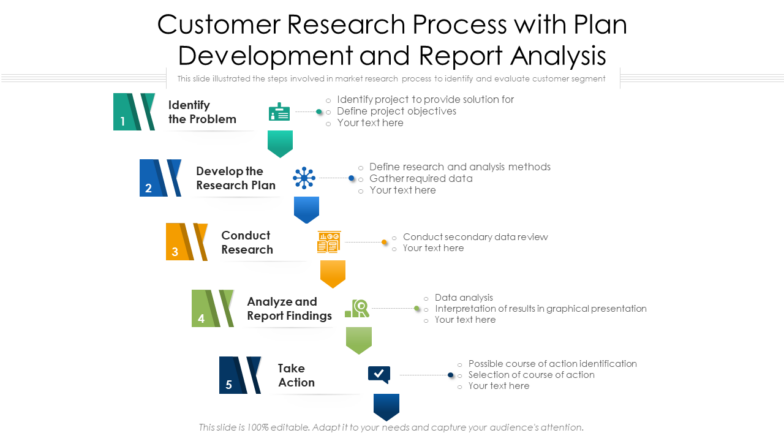
Template 6: Developing the Research Plan Timeline PPT Template
Developing the research plan timeline is a methodical process that necessitates keen attention and effort. Our template makes it easy. From developing the research plan, collecting information, presenting findings, and analyzing information, our template covers every conceivable scenario. Get it now.
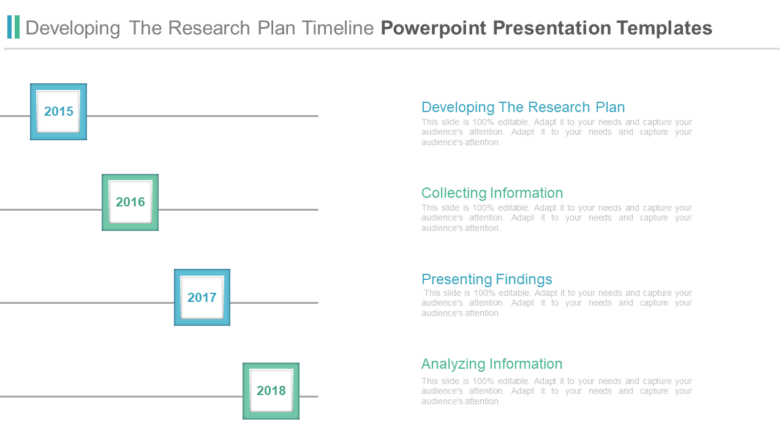
Template 7: Our Market Research Plan PPT Template
Present your organization’s month-wise activities concerning the market research plan. It is designed to foster simplicity and highlights how your market research activities are performing against set targets. You can assign colors to individual activities, which eliminates the risk of duplicacy. Grab it now.
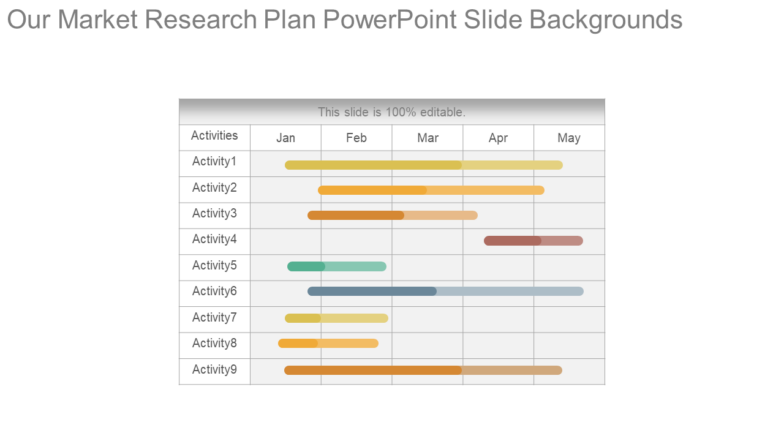
Template 8: Business Marketing Research Plan PPT Template
Business marketing research plans can be troublesome to prepare. With our predesigned PPT Template, you can breathe easy knowing everything concerning your research plan is in place. It helps you build a robust infrastructure of your research plan and reevaluate every critical piece to ensure ideal results. Get it now.
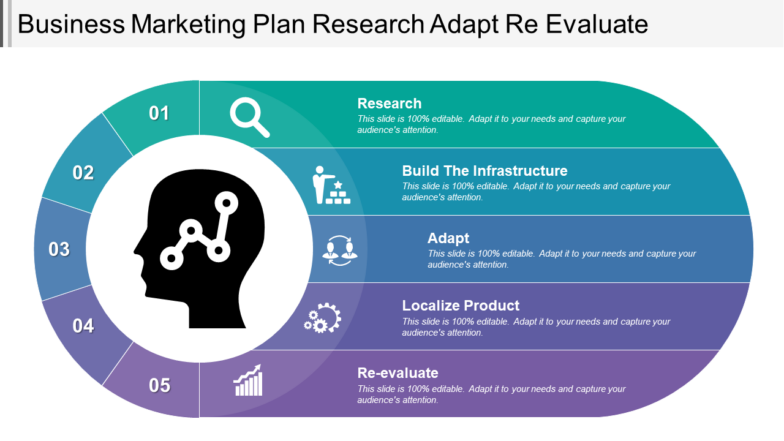
Template 9: Shopper Journey Need Desire Research Plan
This predesigned PowerPoint Presentation helps you prepare an inclusive flowchart encompassing the shoppers’ journey giving special attention to their needs and desires. It also emphasizes the importance of loyalty and experience throughout the journey of these shoppers. This template offers you insights you need to build your research plan. Download it now.
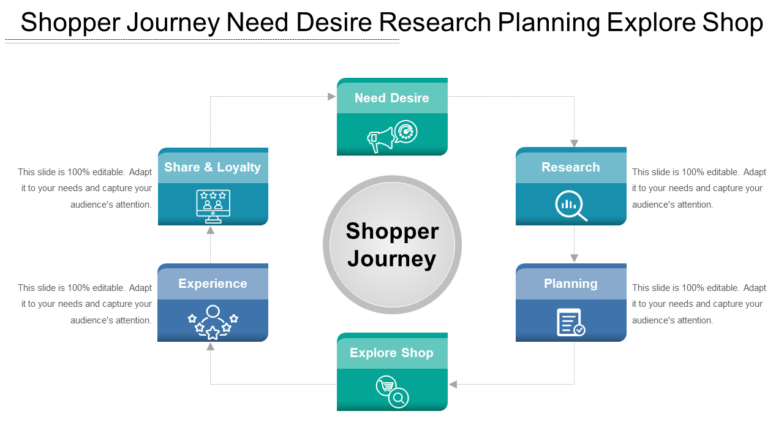
Template 10: Market Research Business Plan Diagram
This four-phase market research business plan is a must-have for every enterprise. This is a four-stage process: Exploration, Design and Development, Planning, and Implementation. Each phase has a space for writing a brief where you can highlight points for your audience. The goal of this template is to allow you to conduct market research and make it easier to comprehend the viability of your plans. Download now.
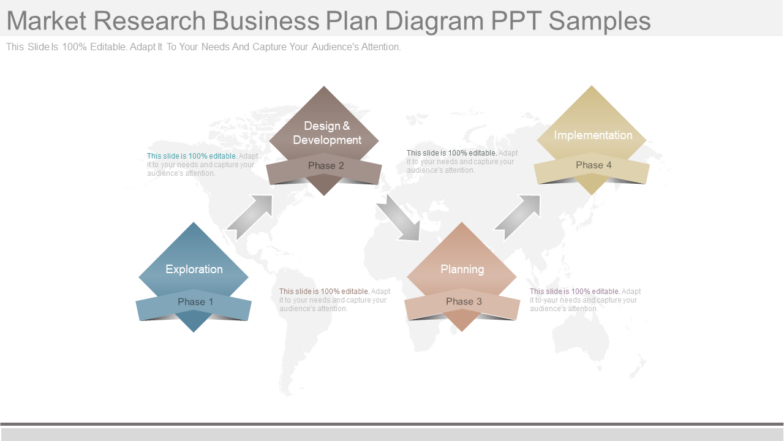
Summing It Up
Your user research plan is a blueprint for your research project. It's the most straightforward way to set expectations, solicit feedback, and generate enthusiasm and support for your research.
A solid research plan can go a long way toward ensuring a solid research project, whether it actively guides your interviews or provides an active structure for organizing your thoughts.
FAQs on Research Plan Templates
What is a research plan.
A research plan is a framework that outlines your approach to your topic. A written outline, a narrative, a visual/concept map, or a timeline are all examples of plans. It is a living document that evolves as you conduct your research.
Components of a research plan:
- Research conceptualization - presents your research question.
- Research methodology - describes how you intend to approach the research question.
- Literature review, critical evaluation, and synthesis - a methodical approach to locating, reviewing, and evaluating relevant work (texts, exhibitions, critiques, etc.)
- Communication - directed at a specific audience, demonstrating evidence of your investigation
How do you write a research plan?
Steps to writing a research plan:
- Define the project's goal
- Determine individual objectives
- Choose a research method
- Organize participants and assign tasks
- Create a project synopsis
- Make a realistic timetable
- Determine how you will present your findings
What are the 5 elements of research?
The systematic investigation of discovering new knowledge or contributing to generalized knowledge is known as research. It adheres to a specific structure that is specified in the research design. For research to be successful, elements that aid in problem-solving must be included. Here are some examples of good research design elements that produce excellent results:
- Statement of purpose
- Methods of data collection
- Techniques for analyzing research data
- Methodologies of research
- Research difficulties
- Prerequisites for conducting research
- The appropriate time for the research study
- Analysis measurement
What is the difference between a research proposal and a research report?
A research proposal is a medium by which a researcher introduces the research problem and communicates the need for research. It is imperative in the application process. It provides a snapshot of the questions that the researcher hopes to answer using the research. It specifies the researcher's methodology during the research process.
On the other hand, a research report is the culmination of the research effort. It's an excellent way to explain the research and its findings to a group of people. It is the result of a study conducted during the research process.
Related posts:
- How to Design the Perfect Service Launch Presentation [Custom Launch Deck Included]
- Quarterly Business Review Presentation: All the Essential Slides You Need in Your Deck
- [Updated 2023] How to Design The Perfect Product Launch Presentation [Best Templates Included]
- 99% of the Pitches Fail! Find Out What Makes Any Startup a Success
Liked this blog? Please recommend us

Top 10 Research Proposal Introduction Templates With Examples and Samples (Free PDF Attached)

Top 10 Research Paper Proposal Templates with Samples and Examples
This form is protected by reCAPTCHA - the Google Privacy Policy and Terms of Service apply.

Digital revolution powerpoint presentation slides

Sales funnel results presentation layouts
3d men joinning circular jigsaw puzzles ppt graphics icons

Business Strategic Planning Template For Organizations Powerpoint Presentation Slides

Future plan powerpoint template slide

Project Management Team Powerpoint Presentation Slides

Brand marketing powerpoint presentation slides

Launching a new service powerpoint presentation with slides go to market

Agenda powerpoint slide show

Four key metrics donut chart with percentage

Engineering and technology ppt inspiration example introduction continuous process improvement

Meet our team representing in circular format

How To Write A Research Paper
Step-By-Step Tutorial With Examples + FREE Template
By: Derek Jansen (MBA) | Expert Reviewer: Dr Eunice Rautenbach | March 2024
For many students, crafting a strong research paper from scratch can feel like a daunting task – and rightly so! In this post, we’ll unpack what a research paper is, what it needs to do , and how to write one – in three easy steps. 🙂
Overview: Writing A Research Paper
What (exactly) is a research paper.
- How to write a research paper
- Stage 1 : Topic & literature search
- Stage 2 : Structure & outline
- Stage 3 : Iterative writing
- Key takeaways
Let’s start by asking the most important question, “ What is a research paper? ”.
Simply put, a research paper is a scholarly written work where the writer (that’s you!) answers a specific question (this is called a research question ) through evidence-based arguments . Evidence-based is the keyword here. In other words, a research paper is different from an essay or other writing assignments that draw from the writer’s personal opinions or experiences. With a research paper, it’s all about building your arguments based on evidence (we’ll talk more about that evidence a little later).
Now, it’s worth noting that there are many different types of research papers , including analytical papers (the type I just described), argumentative papers, and interpretative papers. Here, we’ll focus on analytical papers , as these are some of the most common – but if you’re keen to learn about other types of research papers, be sure to check out the rest of the blog .
With that basic foundation laid, let’s get down to business and look at how to write a research paper .

Overview: The 3-Stage Process
While there are, of course, many potential approaches you can take to write a research paper, there are typically three stages to the writing process. So, in this tutorial, we’ll present a straightforward three-step process that we use when working with students at Grad Coach.
These three steps are:
- Finding a research topic and reviewing the existing literature
- Developing a provisional structure and outline for your paper, and
- Writing up your initial draft and then refining it iteratively
Let’s dig into each of these.
Need a helping hand?
Step 1: Find a topic and review the literature
As we mentioned earlier, in a research paper, you, as the researcher, will try to answer a question . More specifically, that’s called a research question , and it sets the direction of your entire paper. What’s important to understand though is that you’ll need to answer that research question with the help of high-quality sources – for example, journal articles, government reports, case studies, and so on. We’ll circle back to this in a minute.
The first stage of the research process is deciding on what your research question will be and then reviewing the existing literature (in other words, past studies and papers) to see what they say about that specific research question. In some cases, your professor may provide you with a predetermined research question (or set of questions). However, in many cases, you’ll need to find your own research question within a certain topic area.
Finding a strong research question hinges on identifying a meaningful research gap – in other words, an area that’s lacking in existing research. There’s a lot to unpack here, so if you wanna learn more, check out the plain-language explainer video below.
Once you’ve figured out which question (or questions) you’ll attempt to answer in your research paper, you’ll need to do a deep dive into the existing literature – this is called a “ literature search ”. Again, there are many ways to go about this, but your most likely starting point will be Google Scholar .
If you’re new to Google Scholar, think of it as Google for the academic world. You can start by simply entering a few different keywords that are relevant to your research question and it will then present a host of articles for you to review. What you want to pay close attention to here is the number of citations for each paper – the more citations a paper has, the more credible it is (generally speaking – there are some exceptions, of course).

Ideally, what you’re looking for are well-cited papers that are highly relevant to your topic. That said, keep in mind that citations are a cumulative metric , so older papers will often have more citations than newer papers – just because they’ve been around for longer. So, don’t fixate on this metric in isolation – relevance and recency are also very important.
Beyond Google Scholar, you’ll also definitely want to check out academic databases and aggregators such as Science Direct, PubMed, JStor and so on. These will often overlap with the results that you find in Google Scholar, but they can also reveal some hidden gems – so, be sure to check them out.
Once you’ve worked your way through all the literature, you’ll want to catalogue all this information in some sort of spreadsheet so that you can easily recall who said what, when and within what context. If you’d like, we’ve got a free literature spreadsheet that helps you do exactly that.

Step 2: Develop a structure and outline
With your research question pinned down and your literature digested and catalogued, it’s time to move on to planning your actual research paper .
It might sound obvious, but it’s really important to have some sort of rough outline in place before you start writing your paper. So often, we see students eagerly rushing into the writing phase, only to land up with a disjointed research paper that rambles on in multiple
Now, the secret here is to not get caught up in the fine details . Realistically, all you need at this stage is a bullet-point list that describes (in broad strokes) what you’ll discuss and in what order. It’s also useful to remember that you’re not glued to this outline – in all likelihood, you’ll chop and change some sections once you start writing, and that’s perfectly okay. What’s important is that you have some sort of roadmap in place from the start.

At this stage you might be wondering, “ But how should I structure my research paper? ”. Well, there’s no one-size-fits-all solution here, but in general, a research paper will consist of a few relatively standardised components:
- Introduction
- Literature review
- Methodology
Let’s take a look at each of these.
First up is the introduction section . As the name suggests, the purpose of the introduction is to set the scene for your research paper. There are usually (at least) four ingredients that go into this section – these are the background to the topic, the research problem and resultant research question , and the justification or rationale. If you’re interested, the video below unpacks the introduction section in more detail.
The next section of your research paper will typically be your literature review . Remember all that literature you worked through earlier? Well, this is where you’ll present your interpretation of all that content . You’ll do this by writing about recent trends, developments, and arguments within the literature – but more specifically, those that are relevant to your research question . The literature review can oftentimes seem a little daunting, even to seasoned researchers, so be sure to check out our extensive collection of literature review content here .
With the introduction and lit review out of the way, the next section of your paper is the research methodology . In a nutshell, the methodology section should describe to your reader what you did (beyond just reviewing the existing literature) to answer your research question. For example, what data did you collect, how did you collect that data, how did you analyse that data and so on? For each choice, you’ll also need to justify why you chose to do it that way, and what the strengths and weaknesses of your approach were.
Now, it’s worth mentioning that for some research papers, this aspect of the project may be a lot simpler . For example, you may only need to draw on secondary sources (in other words, existing data sets). In some cases, you may just be asked to draw your conclusions from the literature search itself (in other words, there may be no data analysis at all). But, if you are required to collect and analyse data, you’ll need to pay a lot of attention to the methodology section. The video below provides an example of what the methodology section might look like.
By this stage of your paper, you will have explained what your research question is, what the existing literature has to say about that question, and how you analysed additional data to try to answer your question. So, the natural next step is to present your analysis of that data . This section is usually called the “results” or “analysis” section and this is where you’ll showcase your findings.
Depending on your school’s requirements, you may need to present and interpret the data in one section – or you might split the presentation and the interpretation into two sections. In the latter case, your “results” section will just describe the data, and the “discussion” is where you’ll interpret that data and explicitly link your analysis back to your research question. If you’re not sure which approach to take, check in with your professor or take a look at past papers to see what the norms are for your programme.
Alright – once you’ve presented and discussed your results, it’s time to wrap it up . This usually takes the form of the “ conclusion ” section. In the conclusion, you’ll need to highlight the key takeaways from your study and close the loop by explicitly answering your research question. Again, the exact requirements here will vary depending on your programme (and you may not even need a conclusion section at all) – so be sure to check with your professor if you’re unsure.
Step 3: Write and refine
Finally, it’s time to get writing. All too often though, students hit a brick wall right about here… So, how do you avoid this happening to you?
Well, there’s a lot to be said when it comes to writing a research paper (or any sort of academic piece), but we’ll share three practical tips to help you get started.
First and foremost , it’s essential to approach your writing as an iterative process. In other words, you need to start with a really messy first draft and then polish it over multiple rounds of editing. Don’t waste your time trying to write a perfect research paper in one go. Instead, take the pressure off yourself by adopting an iterative approach.
Secondly , it’s important to always lean towards critical writing , rather than descriptive writing. What does this mean? Well, at the simplest level, descriptive writing focuses on the “ what ”, while critical writing digs into the “ so what ” – in other words, the implications . If you’re not familiar with these two types of writing, don’t worry! You can find a plain-language explanation here.
Last but not least, you’ll need to get your referencing right. Specifically, you’ll need to provide credible, correctly formatted citations for the statements you make. We see students making referencing mistakes all the time and it costs them dearly. The good news is that you can easily avoid this by using a simple reference manager . If you don’t have one, check out our video about Mendeley, an easy (and free) reference management tool that you can start using today.
Recap: Key Takeaways
We’ve covered a lot of ground here. To recap, the three steps to writing a high-quality research paper are:
- To choose a research question and review the literature
- To plan your paper structure and draft an outline
- To take an iterative approach to writing, focusing on critical writing and strong referencing
Remember, this is just a b ig-picture overview of the research paper development process and there’s a lot more nuance to unpack. So, be sure to grab a copy of our free research paper template to learn more about how to write a research paper.
You Might Also Like:

Submit a Comment Cancel reply
Your email address will not be published. Required fields are marked *
Save my name, email, and website in this browser for the next time I comment.
- Print Friendly
Purdue Online Writing Lab Purdue OWL® College of Liberal Arts
Welcome to the Purdue Online Writing Lab

Welcome to the Purdue OWL
This page is brought to you by the OWL at Purdue University. When printing this page, you must include the entire legal notice.
Copyright ©1995-2018 by The Writing Lab & The OWL at Purdue and Purdue University. All rights reserved. This material may not be published, reproduced, broadcast, rewritten, or redistributed without permission. Use of this site constitutes acceptance of our terms and conditions of fair use.
The Online Writing Lab at Purdue University houses writing resources and instructional material, and we provide these as a free service of the Writing Lab at Purdue. Students, members of the community, and users worldwide will find information to assist with many writing projects. Teachers and trainers may use this material for in-class and out-of-class instruction.
The Purdue On-Campus Writing Lab and Purdue Online Writing Lab assist clients in their development as writers—no matter what their skill level—with on-campus consultations, online participation, and community engagement. The Purdue Writing Lab serves the Purdue, West Lafayette, campus and coordinates with local literacy initiatives. The Purdue OWL offers global support through online reference materials and services.
A Message From the Assistant Director of Content Development
The Purdue OWL® is committed to supporting students, instructors, and writers by offering a wide range of resources that are developed and revised with them in mind. To do this, the OWL team is always exploring possibilties for a better design, allowing accessibility and user experience to guide our process. As the OWL undergoes some changes, we welcome your feedback and suggestions by email at any time.
Please don't hesitate to contact us via our contact page if you have any questions or comments.
All the best,
Social Media
Facebook twitter.

< Go back to Login
Forgot Password
Please enter your registered email ID. You will receive an email message with instructions on how to reset your password.

Day One Venture Series A Pitch Deck

You May Also Like
- Pitch Deck - 4x3 – $19.99
- Pitch Deck - 16x9 – $19.99
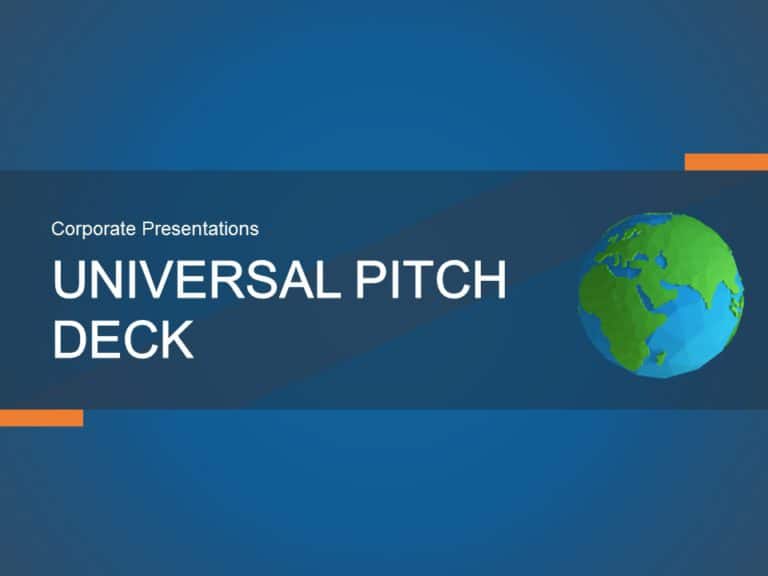
Pitch Deck PowerPoint Template
About Universal Pitch Deck PowerPoint Template The Universal Pitch Deck PowerPoint template is a unique multi-purpose slide deck suitable for all types of pitches. You can use it to pitch your business to investors, pitch a product to a client, pitch your project idea, and many more. The initial slides talk about the company overview, the problem, and the solution... read more
- Pitch Deck Example - 4x3 – $19.99
- Pitch Deck Example - 16x9 – $19.99

Pitch Deck Example PowerPoint Template
Pitch Deck Example Presentation Template Use this Pitch Deck Example PowerPoint template to create visually appealing presentations in any professional setting. Its minimalistic design and ready-to-use features enhance your presentation slides ten folds. The Pitch Deck Example PPT template is professionally designed with the principles of vision sciences to capture your audience’s attention. Convey your message clearly with our unique... read more
- Day Planning Timeline - 4x3 – $4.99
- Day Planning Timeline - 16x9 – $4.99

Day Planning Timeline Template for PowerPoint and Google Slides
Day Planning Timeline Template for PowerPoint and Google Slides The Day Planning Timeline Template is all about planning out your day. A timeline at the center of the slide shows different times of the day. For each part of the day on the timeline, there is space provided to write down what you need to do. The main purpose of... read more
- Day Planning Timeline 1 - 4x3 – $6.99
- Day Planning Timeline 1 - 16x9 – $6.99

Day Planning Timeline PowerPoint Template 1
Day Planning Timeline PowerPoint Template The Day Planning Timeline PowerPoint Template offers a simple format for planning tasks throughout a specific day. The design of the template includes different key points. At the top of the slide, there’s a timeline marked with the date designed for organizing tasks. The timeline covers the workday or active hours for task planning. The... read more
- One-Page-Fact-Sheet-01 - 4x3 – $6.99
- One-Page-Fact-Sheet-01 - 16x9 – $6.99

One Page Fact Sheet Template
One page fact sheet helps you indicate the analysis of your sales team, it uses visually engaging graphs and tables to present key insights effectively. One Page Fact Sheet Template The One Page Fact Sheet Template provides a detailed overview of sales team performance, product sales figures, and key metrics. It features detailed information on five sales team members, including... read more
- One-Page-Company-Overview-PowerPoint-Template - 4x3 – $5.99
- One-Page-Company-Overview-PowerPoint-Template - 16x9 – $5.99

One Page Company Overview PowerPoint Template
One Page Company Overview Presentation Template Use this One Page Company Overview PowerPoint template and Google Slides theme to create visually appealing presentations in any professional setting. Its minimalistic design and ready-to-use features enhance your presentation slides ten folds. The One Page Company Overview PPT template is professionally designed with the principles of vision sciences to capture your audience’s attention.... read more
- One-Page-Summary-PowerPoint-Template - 4x3 – $4.99
- One-Page-Summary-PowerPoint-Template - 16x9 – $4.99

One Page Summary PowerPoint Template
One Page Summary Presentation Template Use this One Page Summary PowerPoint template to create visually appealing presentations in any professional setting. Its minimalistic design and ready-to-use features enhance your presentation slides ten folds. The One Page Summary PPT template is professionally designed with the principles of vision sciences to capture your audience’s attention. Convey your message clearly with our unique... read more
Recommended for you
- One-Page-Product-Summary-PowerPoint-Template - 4x3 – $4.99
- One-Page-Product-Summary-PowerPoint-Template - 16x9 – $4.99

One Page Product Summary PowerPoint Template
One Page Product Summary Presentation Template Use this One Page Product Summary PowerPoint template to create visually appealing presentations in any professional setting. Its minimalistic design and ready-to-use features enhance your presentation slides ten folds. The One Page Product Summary PPT template is professionally designed with the principles of vision sciences to capture your audience’s attention. Convey your message clearly... read more
- One-Page-Company-Profile-PowerPoint-Template - 4x3 – $4.99
- One-Page-Company-Profile-PowerPoint-Template - 16x9 – $4.99

One Page Company Profile PowerPoint Template
One Page Company Profile Presentation Template Use this One Page Company Profile PowerPoint template to create visually appealing presentations in any professional setting. Its minimalistic design and ready-to-use features enhance your presentation slides ten folds. The One Page Company Profile PPT template is professionally designed with the principles of vision sciences to capture your audience’s attention. Convey your message clearly... read more
- One-Page-Scientific-Research-PowerPoint-Template- - 4x3 – $4.99
- One-Page-Scientific-Research-PowerPoint-Template- - 16x9 – $4.99

One Page Scientific Research PowerPoint Template
One Page Scientific Research Presentation Template Use this One Page Scientific Research PowerPoint template to create visually appealing presentations in any professional setting. Its minimalistic design and ready-to-use features enhance your presentation slides ten folds. The One Page Scientific Research PPT template is professionally designed with the principles of vision sciences to capture your audience’s attention. Convey your message clearly... read more
- One-Page-Financial-Summary-PowerPoint-Template - 4x3 – $6.99
- One-Page-Financial-Summary-PowerPoint-Template - 16x9 – $6.99

One Page Financial Summary PowerPoint Template
One Page Financial Summary Presentation Template Use this One Page Financial Summary PowerPoint template to create visually appealing presentations in any professional setting. Its minimalistic design and ready-to-use features enhance your presentation slides ten folds. The One Page Financial Summary PPT template is professionally designed with the principles of vision sciences to capture your audience’s attention. Convey your message clearly... read more
- One-Page-Strategic-Plan-PowerPoint-Template - 4x3 – $6.99
- One-Page-Strategic-Plan-PowerPoint-Template - 16x9 – $6.99

One Page Strategic Plan PowerPoint Template
One Page Strategic Plan Presentation Template Use this One Page Strategic Plan PowerPoint template to create visually appealing presentations in any professional setting. Its minimalistic design and ready-to-use features enhance your presentation slides ten folds. The One Page Strategic Plan PPT template is professionally designed with the principles of vision sciences to capture your audience’s attention. Convey your message clearly... read more
- One Page Marketing Plan 04 - 4x3 – $6.99
- One Page Marketing Plan 04 - 16x9 – $6.99

One-Pager Marketing Strategy PowerPoint Template
One Pager Marketing Strategy PowerPoint Template is an effective tool to convey your marketing strategy effectively in only one single, short and concise document. Marketing managers can use this strategy template to give a clear view of how they can achieve their marketing goals. This one-slide PowerPoint consists of six major sections for you to explain in detail. The top... read more
- One Page Business Planning - 4x3 – $4.99
- One Page Business Planning - 16x9 – $4.99
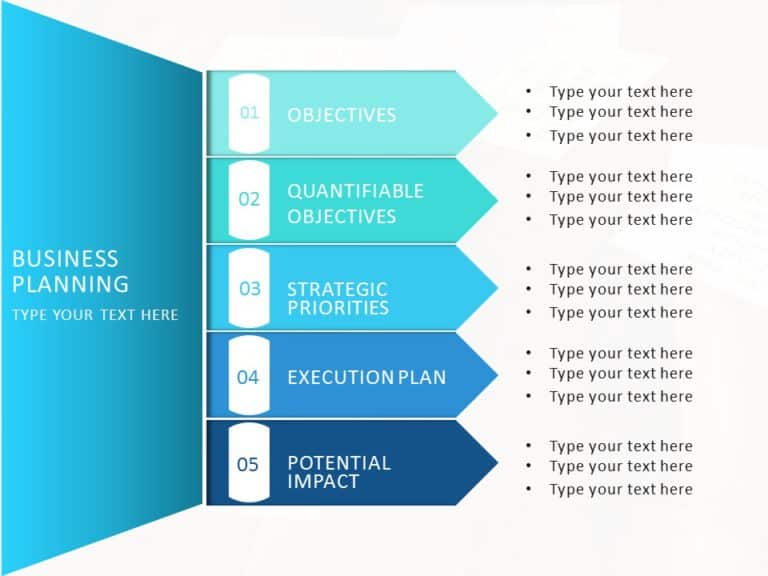
One Page Business Planning PowerPoint Template
One Page Business Planning Presentation Template Use this One Page Business Planning PowerPoint template to create visually appealing presentations in any professional setting. Its minimalistic design and ready-to-use features enhance your presentation slides ten folds. The One Page Business Planning PPT template is professionally designed with the principles of vision sciences to capture your audience’s attention. Convey your message clearly... read more
- One Page Business Plan 03 - 4x3 – $4.99
- One Page Business Plan 03 - 16x9 – $4.99
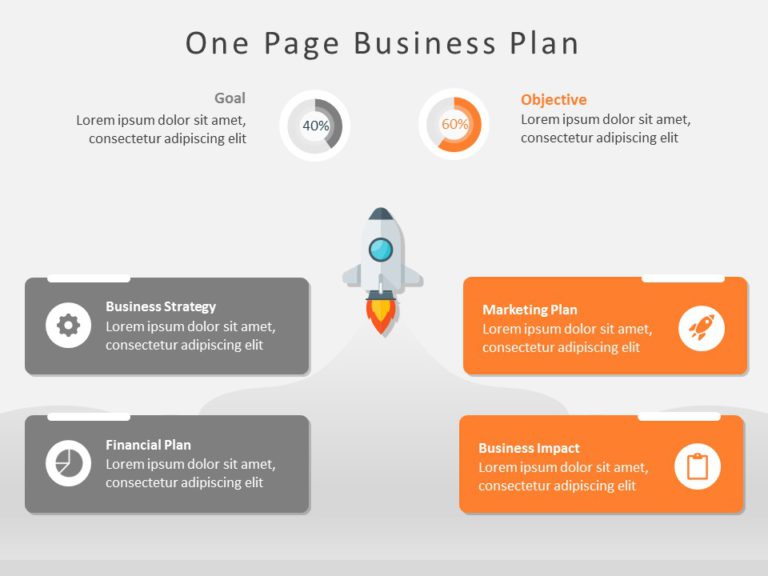
One Page Business Plan 03 PowerPoint Template
One Page Business Plan 03 Presentation Template Use this One Page Business Plan 03 PowerPoint template to create visually appealing presentations in any professional setting. Its minimalistic design and ready-to-use features enhance your presentation slides ten folds. The One Page Business Plan 03 PPT template is professionally designed with the principles of vision sciences to capture your audience’s attention. Convey... read more
Forgot Password?
Join the SlideUpLift Discount Club- A Lifetime Value
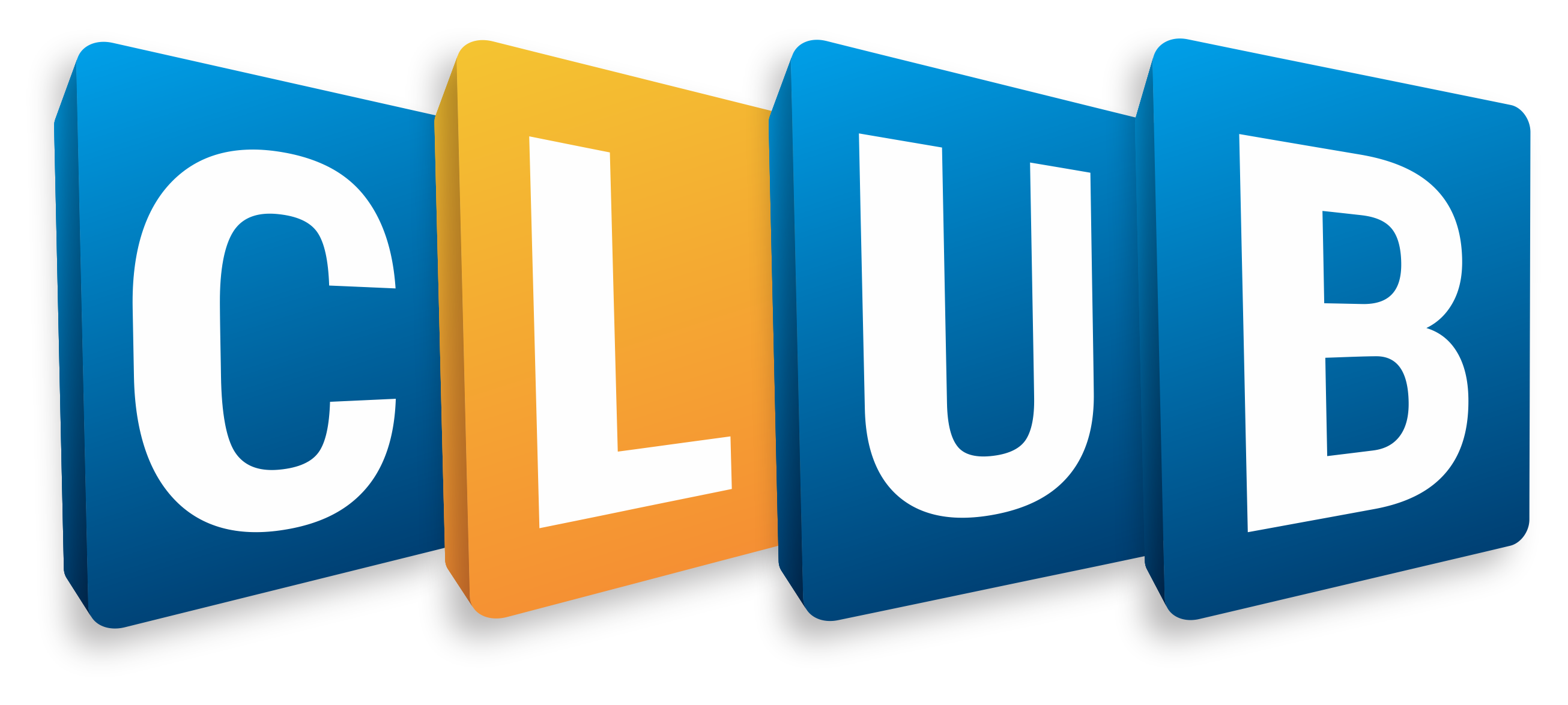
Benefits never expire and apply to the whole SlideUplift library including future additions.
Upon paying a one time fee, you will remain a Discount Clubber for a lifetime and enjoy 20% discounts on all products that you purchase à la carte from SlideUpLift.com
Privacy Overview
Necessary cookies are absolutely essential for the website to function properly. This category only includes cookies that ensures basic functionalities and security features of the website. These cookies do not store any personal information
Any cookies that may not be particularly necessary for the website to function and is used specifically to collect user personal data via ads, other embedded contents are termed as non-necessary cookies. It is mandatory to procure user consent prior to running these cookies on your website.

IMAGES
VIDEO
COMMENTS
Here's an example outline of a research plan you might put together: Project title. Project members involved in the research plan. ... Some companies offer research plan templates to help get you started. However, it may make more sense to develop your own customized plan template. Be sure to include the core elements of a great research plan ...
1. Define the project purpose. The first step to creating a research plan for your project is to define why and what you're researching. Regardless of whether you're working with a team or alone, understanding the project's purpose can help you better define project goals.
Research proposal examples. Writing a research proposal can be quite challenging, but a good starting point could be to look at some examples. We've included a few for you below. Example research proposal #1: "A Conceptual Framework for Scheduling Constraint Management" Example research proposal #2: "Medical Students as Mediators of ...
Step 4: Write a summary. Prepare a project summary that serves as your research project guide. This invaluable tool aids recruitment interviews, meetings, and field studies. With a well-structured summary, you can stay on track during interactions, ensuring you address key project aspects.
1. ClickUp User Research Plan Template. ClickUp User Research Plan Template. One of the first things that comes to mind when you say "research plan template" is user research. For development and project teams, this is one step of the process where strategy and staying organized is essential.
A research plan is a framework that shows how you intend to approach your topic. The plan can take many forms: a written outline, a narrative, a visual/concept map or timeline. It's a document that will change and develop as you conduct your research. Components of a research plan. 1. Research conceptualization - introduces your research question.
UX research plan template: This editable Miro research project plan example helps you brainstorm user and business-facing problems, objectives, and questions. UX research brief: You need a clear brief before you conduct UX research—Milanote shares a template that will help you simplify the writing process.
Research proposal examples. Writing a research proposal can be quite challenging, but a good starting point could be to look at some examples. We've included a few for you below. Example research proposal #1: 'A Conceptual Framework for Scheduling Constraint Management'.
Detailed Walkthrough + Free Proposal Template. If you're getting started crafting your research proposal and are looking for a few examples of research proposals, you've come to the right place. In this video, we walk you through two successful (approved) research proposals, one for a Master's-level project, and one for a PhD-level ...
1. Research Proposal Format Example. Following is a general outline of the material that should be included in your project proposal. I. Title Page II. Introduction and Literature Review (Chapters 2 and 3) A. Identification of specific problem area (e.g., what is it, why it is important). B. Prevalence, scope of problem.
Make sure you can ask the critical what, who, and how questions of your research before you put pen to paper. Your research proposal should include (at least) 5 essential components : Title - provides the first taste of your research, in broad terms. Introduction - explains what you'll be researching in more detail.
What's Included: Research Proposal Template. Our free dissertation/thesis proposal template covers the core essential ingredients for a strong research proposal. It includes clear explanations of what you need to address in each section, as well as straightforward examples and links to further resources. The research proposal template covers ...
A research plan outlines the objectives, methodology, timeline, and resources needed for a research project, acting as a roadmap for systematic investigation. Reforge can enhance the development and execution of research plans with tools and strategies that streamline each phase, from data collection to analysis and interpretation.
Edit and Download. This research proposal template is a total game-changer - you can use it for any research proposal and customize it however you want. It features a modern and refreshing color scheme that immediately makes it stand out, providing a contemporary look that can adapt to any project's needs.
What is a research plan? A research plan example is a document that introduces your main question and how you intend to uncover the answer. They often include details like the surrounding context, objectives, methods, budget, timeline, and more to help you learn more about and eventually solve a customer's pain point or an ineffective interface.
Depending on the length of your research proposal, you may wish to include a contents page for the proposal itself (not for your main research project: suggested contents for this are included in your Proposed Chapter Outline, section 9), as follows (add page numbers/subsections when you know them, depending on your research).As you introduce sub-sections into your different sections, number ...
5. Sample plan. The sample plan should be used to indicate the amount of participants you wish to research, as well as a breakdown of each group. This will be affected by the choice to use qualitative, quantitative or multi-method approaches, as well as the estimated size of the target population.
Template 1: Business Research Plan PPT Template. Framing a successful business research plan involves dealing with many headaches. A well-structured PPT Template is the answer in all cases. SlideTeam presents a business research plan design that explains project context and objectives, a plan of action, and a timeline to track progress.
We've covered a lot of ground here. To recap, the three steps to writing a high-quality research paper are: To choose a research question and review the literature. To plan your paper structure and draft an outline. To take an iterative approach to writing, focusing on critical writing and strong referencing.
The 7 core components of a user research plan: The background of the research project detailing why we are conducting this study. This can also include the internal stakeholders involved. The objectives and goals of the research, what the teams want to learn from the research, or what they would like the outcome to be.
How to plan a UX research study. This is a step-by-step guide to planning user research. It explains the process by which a research plan comes together into a shareable document (like the one above) that enables team alignment, accountability, and efficiency throughout your study. 1. Identify your research goals.
A UX research plan, also known as a user research plan, is a brief reference document that outlines your research project's goals, key contributors, important dates, and timelines. Think of your research plan as a UX-focused kick-off document for your project. The plan offers an overview of the research initiative, encourages well-defined and ...
The Action Plan template can include research/capacity building goals. You may have several objectives for each goal. Goal: Expresses a clear and general sense of direction, a purpose, an aim. The three goals outlined focus on the most important outcome to be achieved, or ... For example, event satisfaction survey; interview with org leadership ...
The Online Writing Lab at Purdue University houses writing resources and instructional material, and we provide these as a free service of the Writing Lab at Purdue.
Download 100% editable Day One Venture Series A Pitch Deck to visualize your presentation content effectively.
1. Open the template in Canva. 2. In Canva click on "Share" at the top right-hand corner, then click "More" 3. Scroll down further and you will see "Google Drive" button. 4. Choose the "PPTX" or Powerpoint file type. Make sure to click "All Pages" on select pages. 5. Your template is exported to Google Slides!